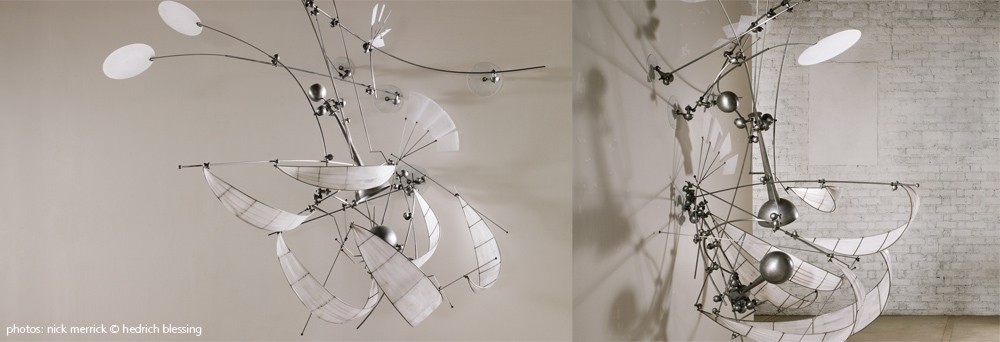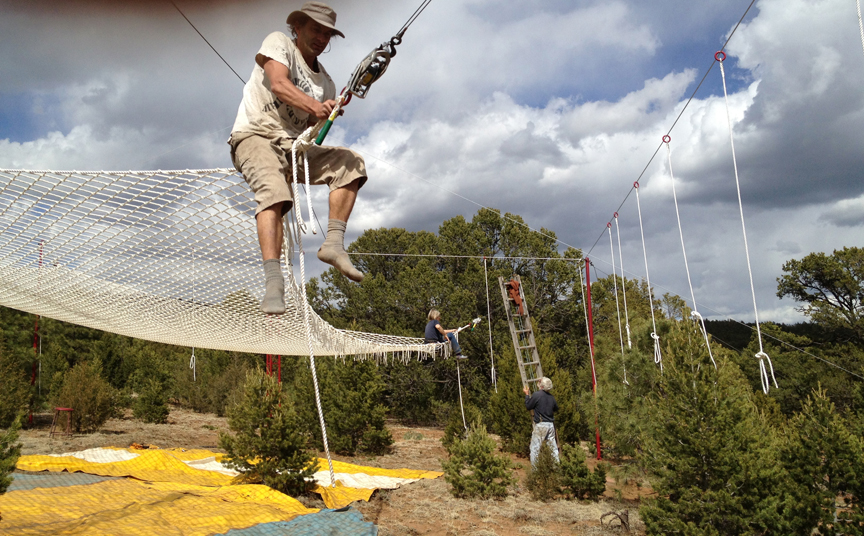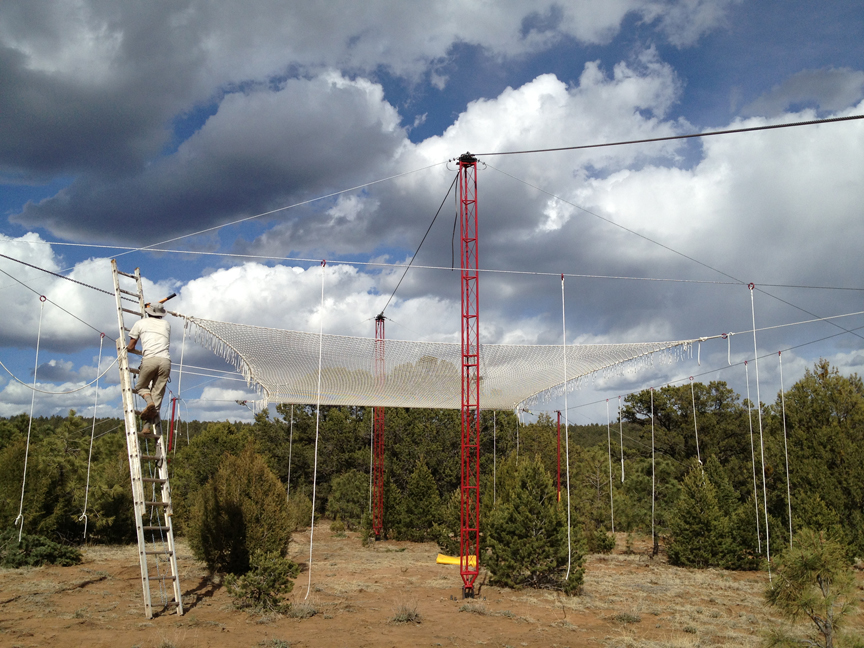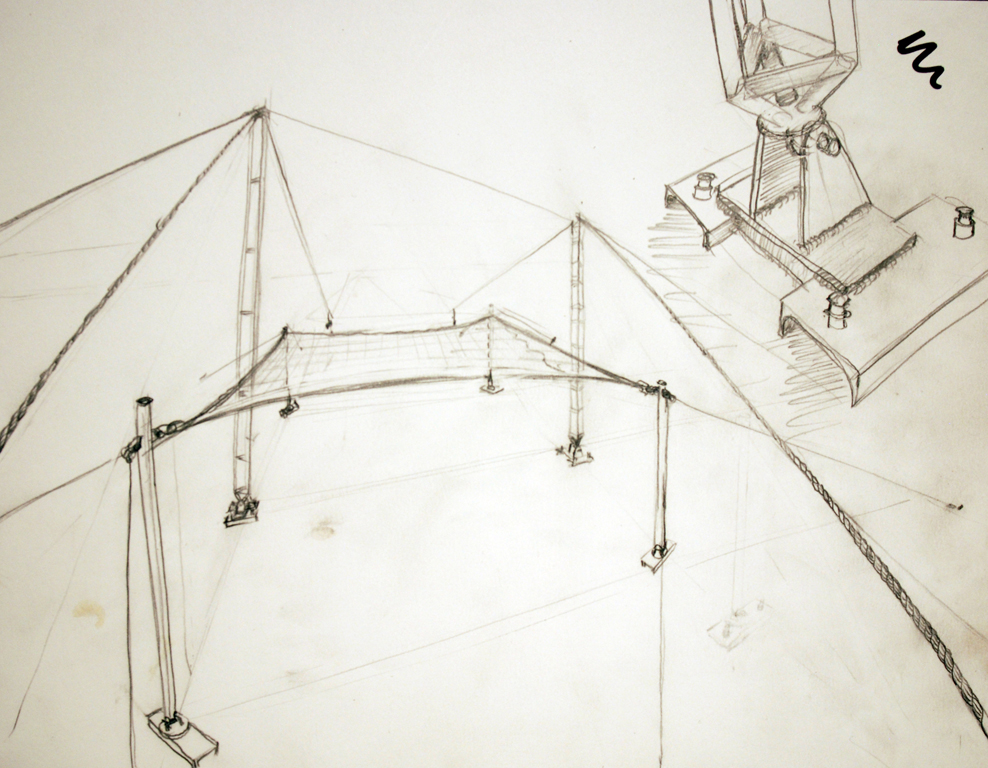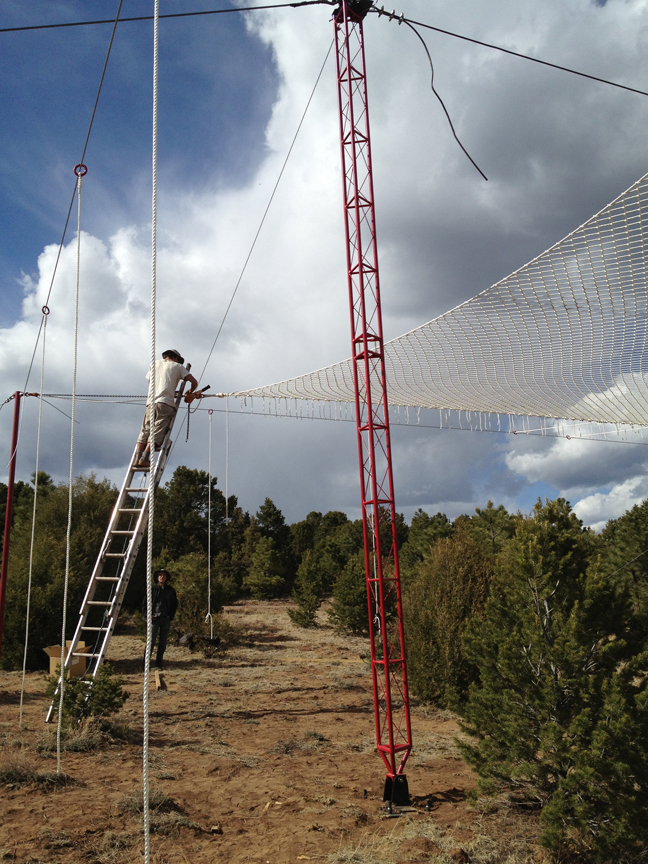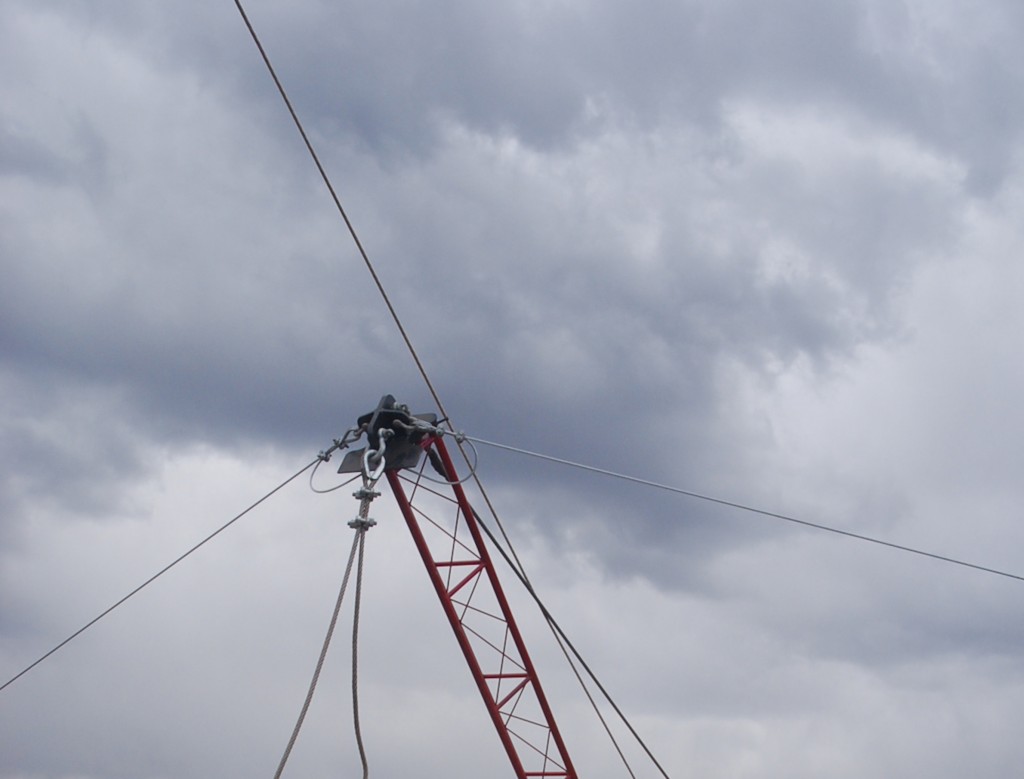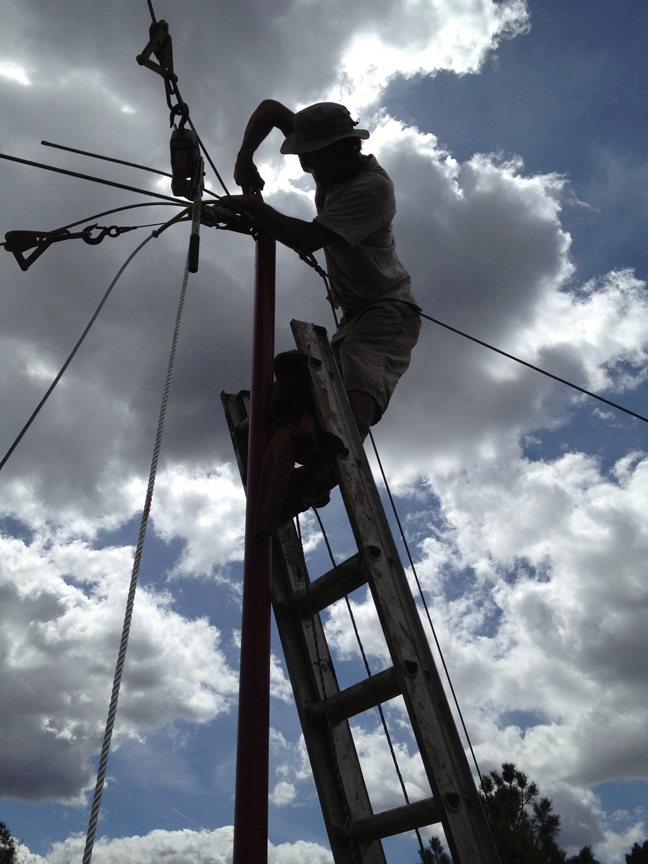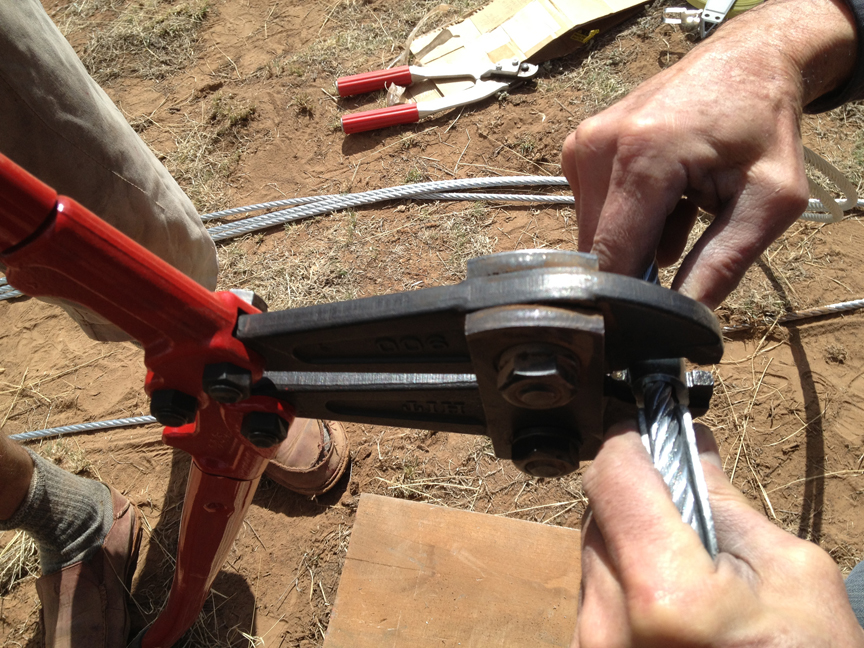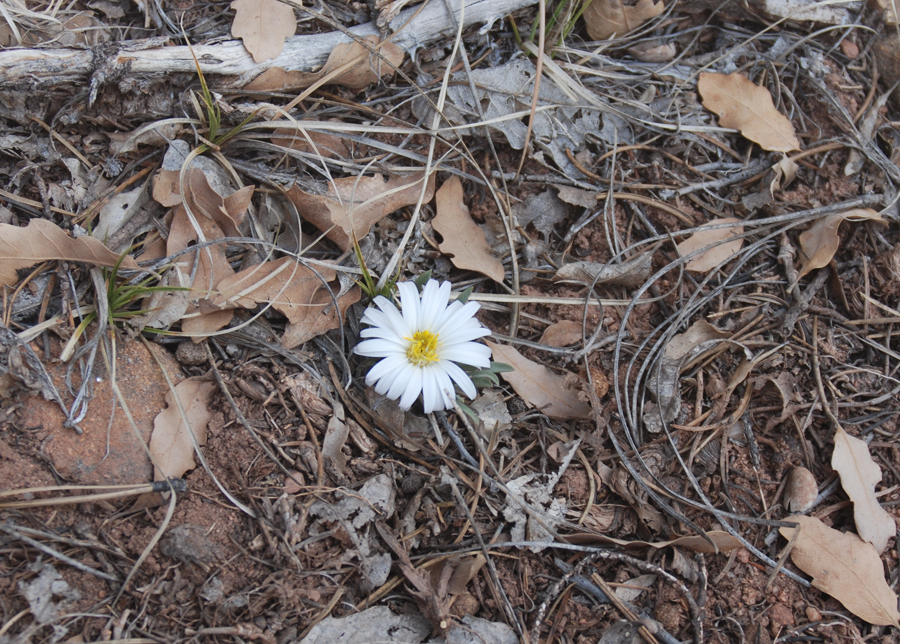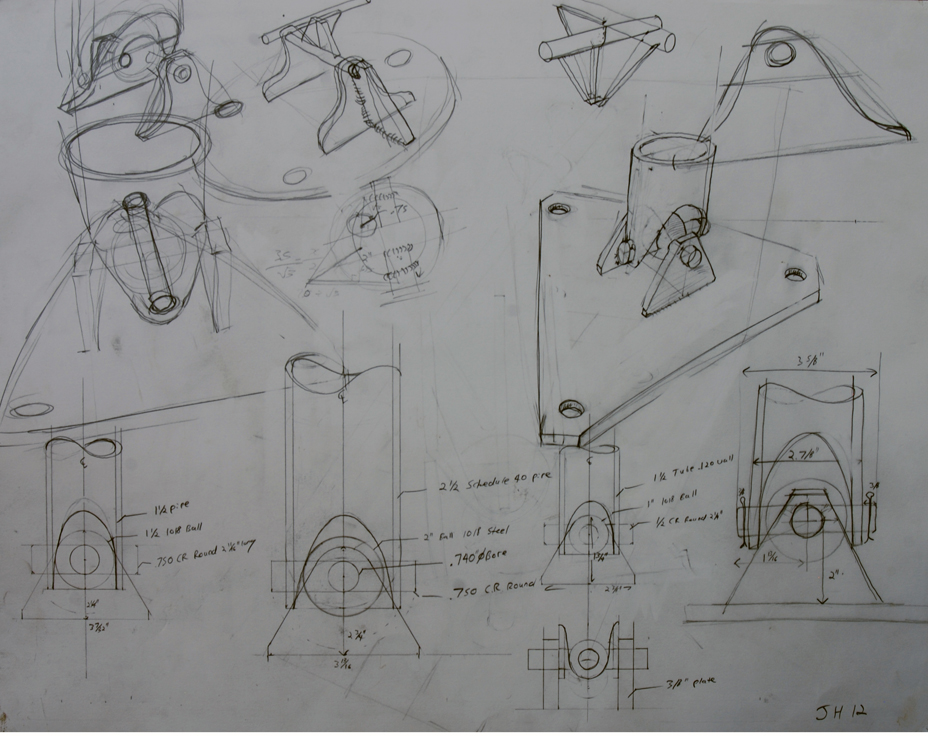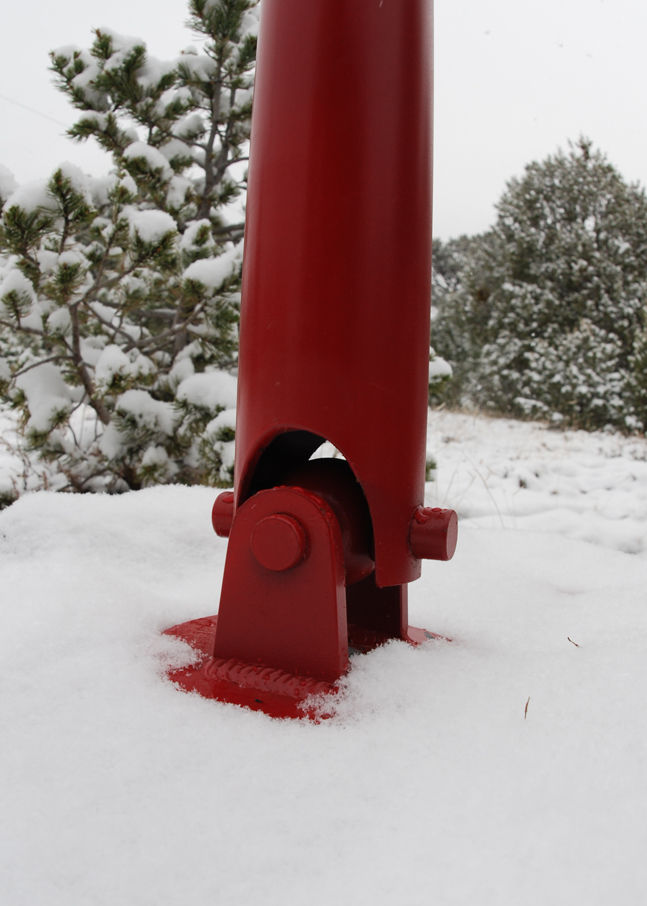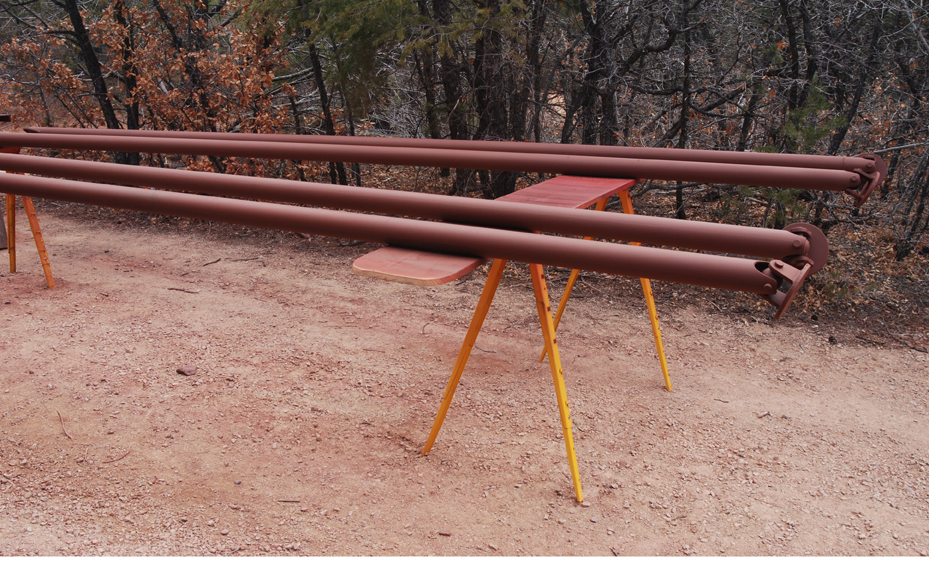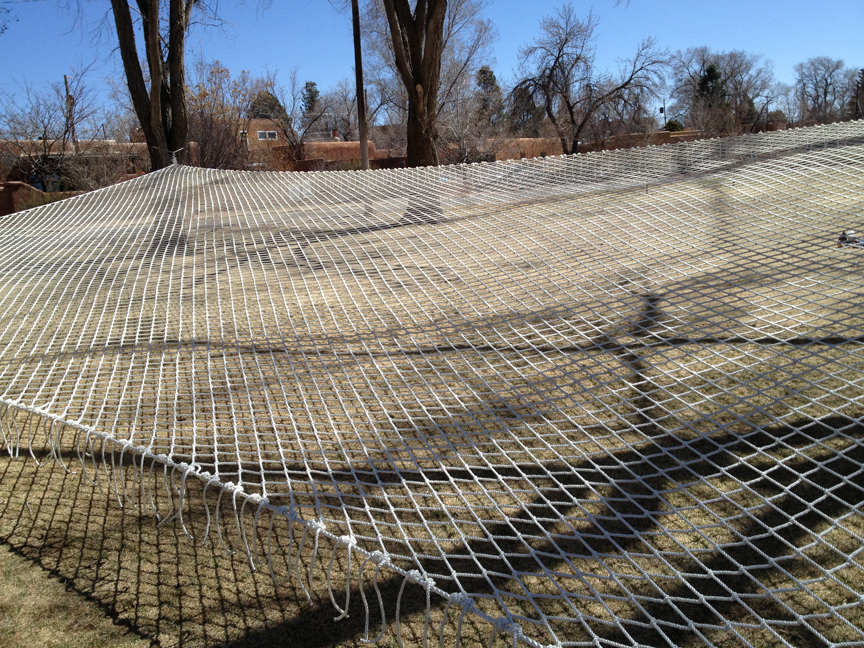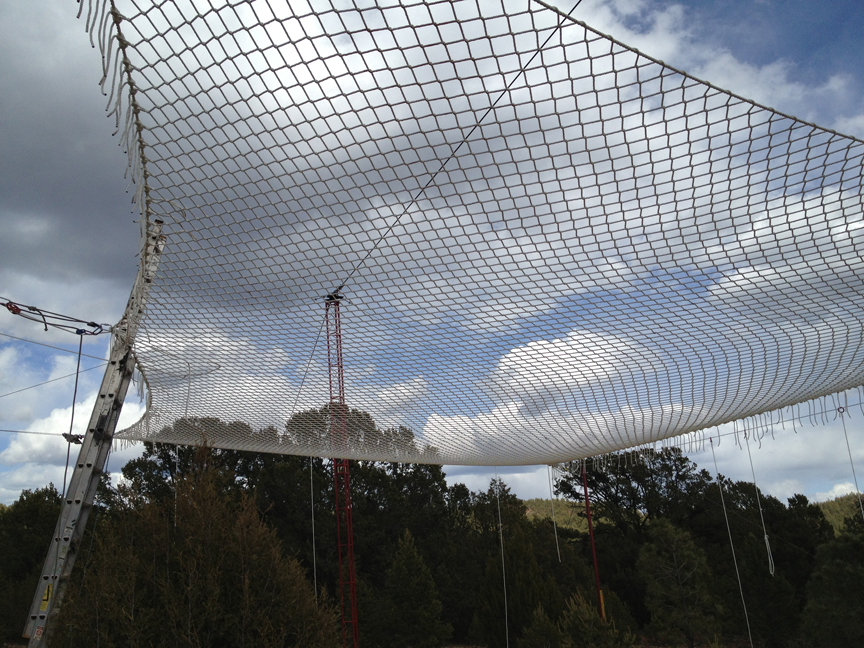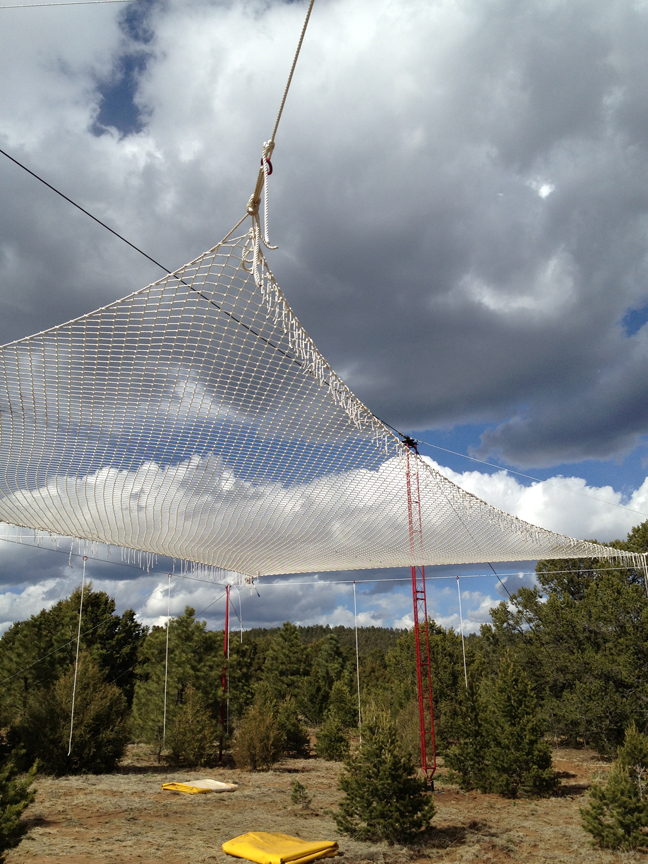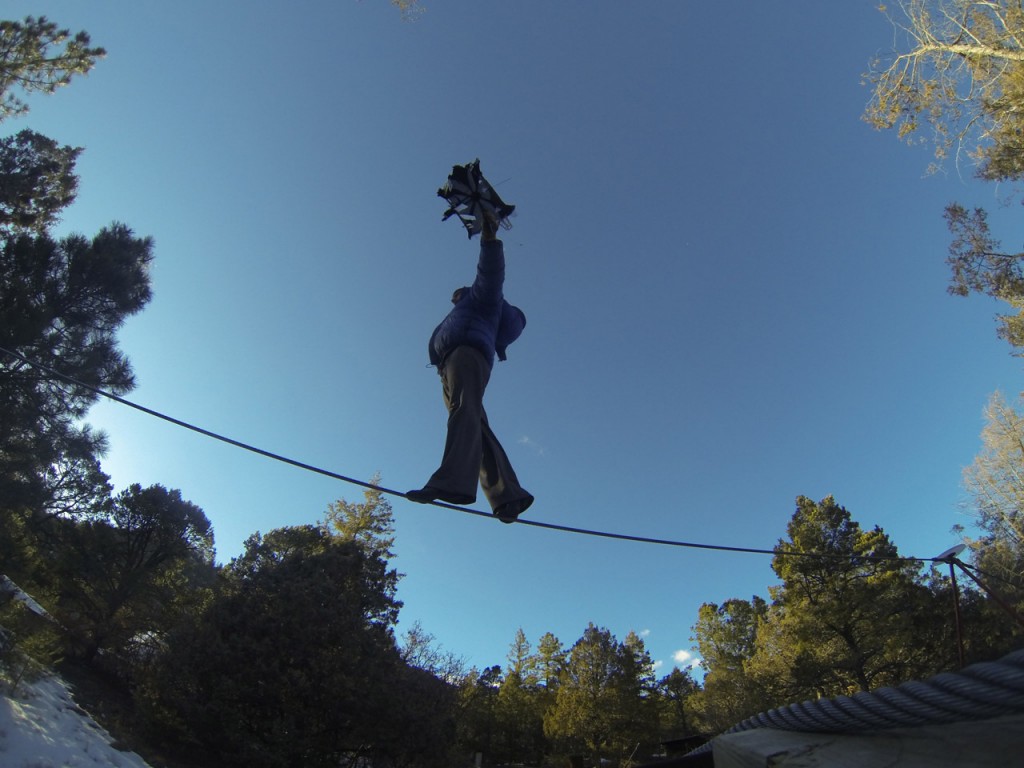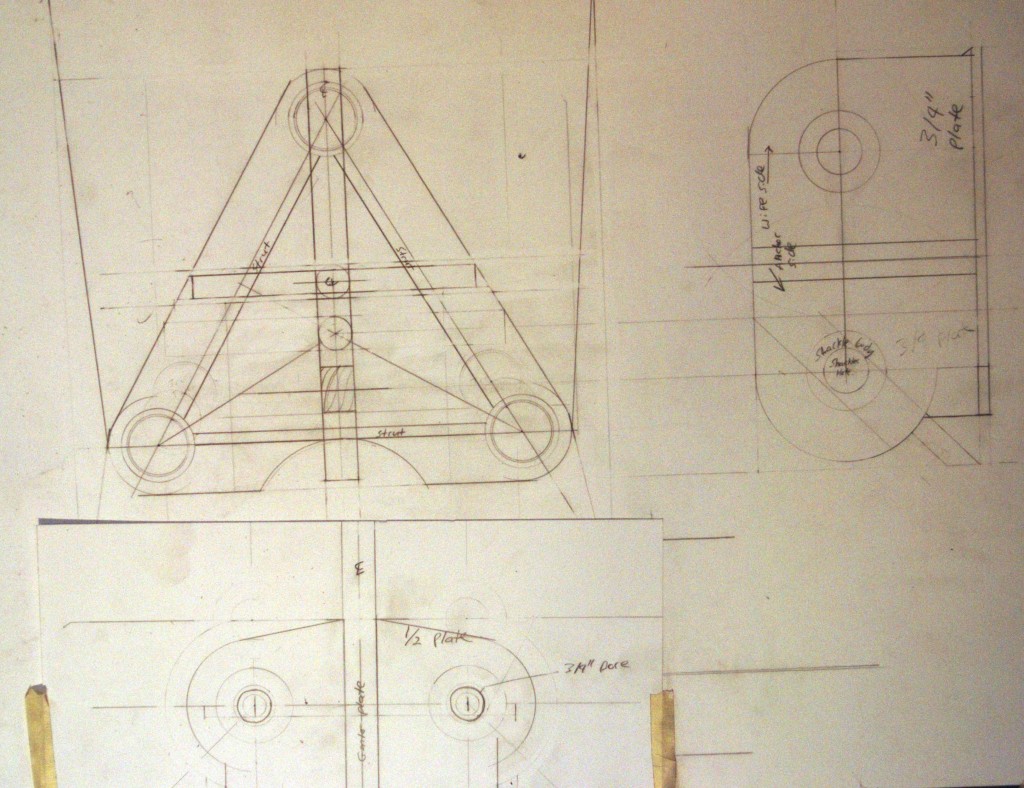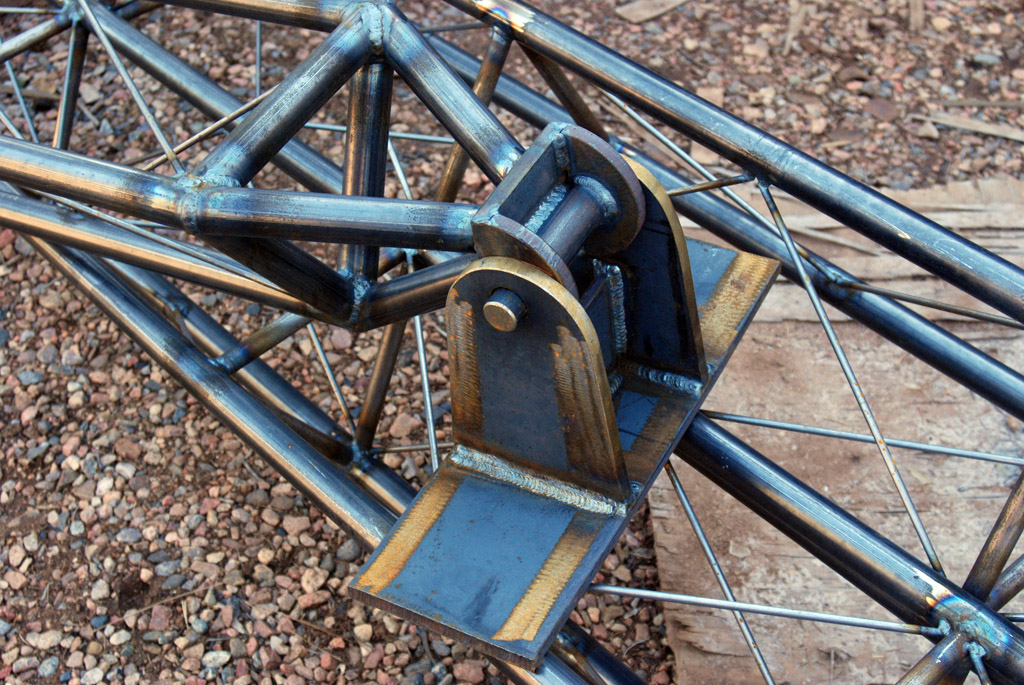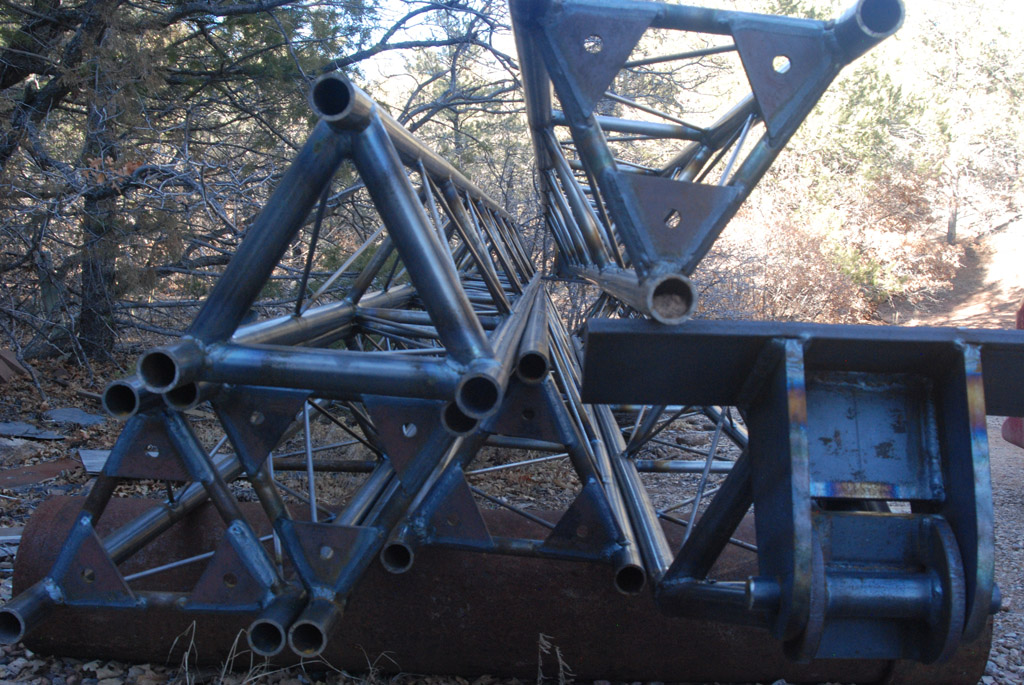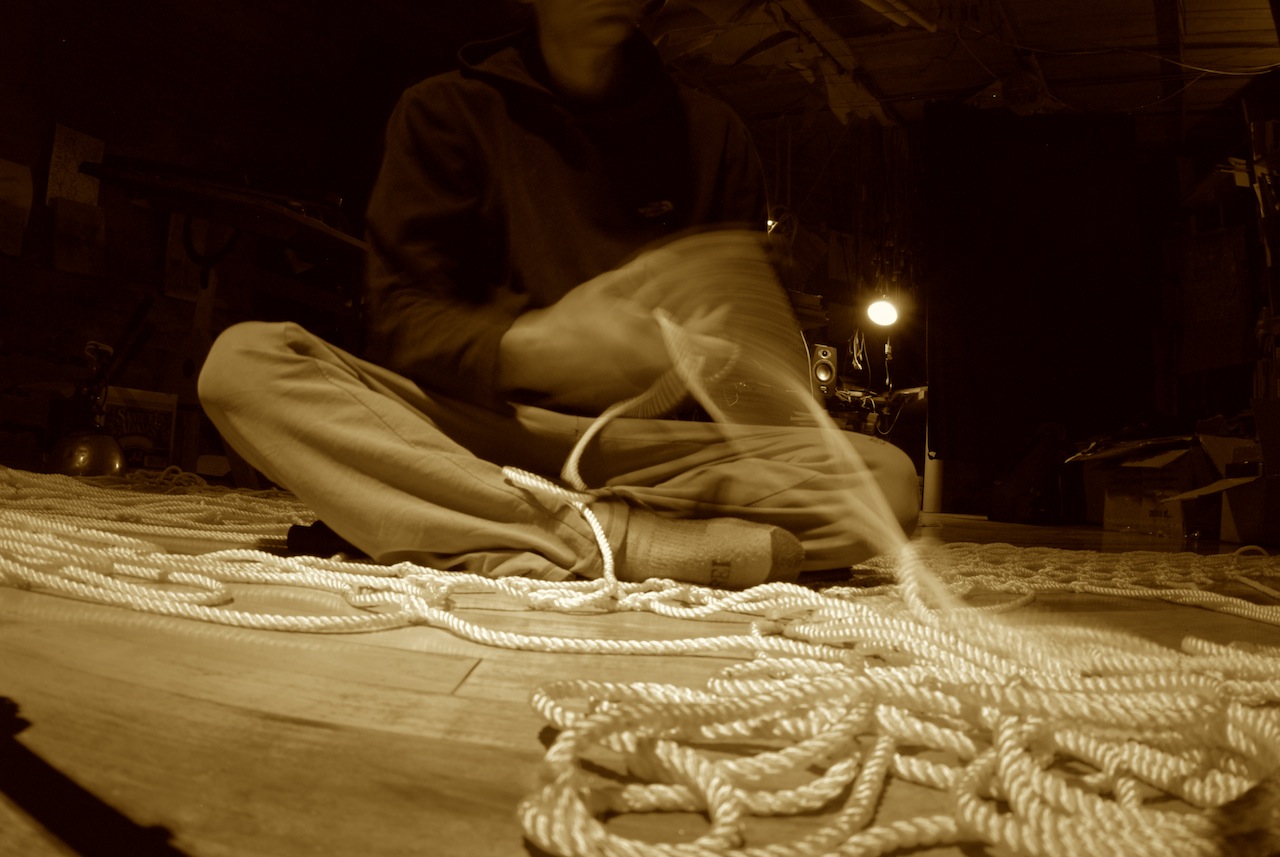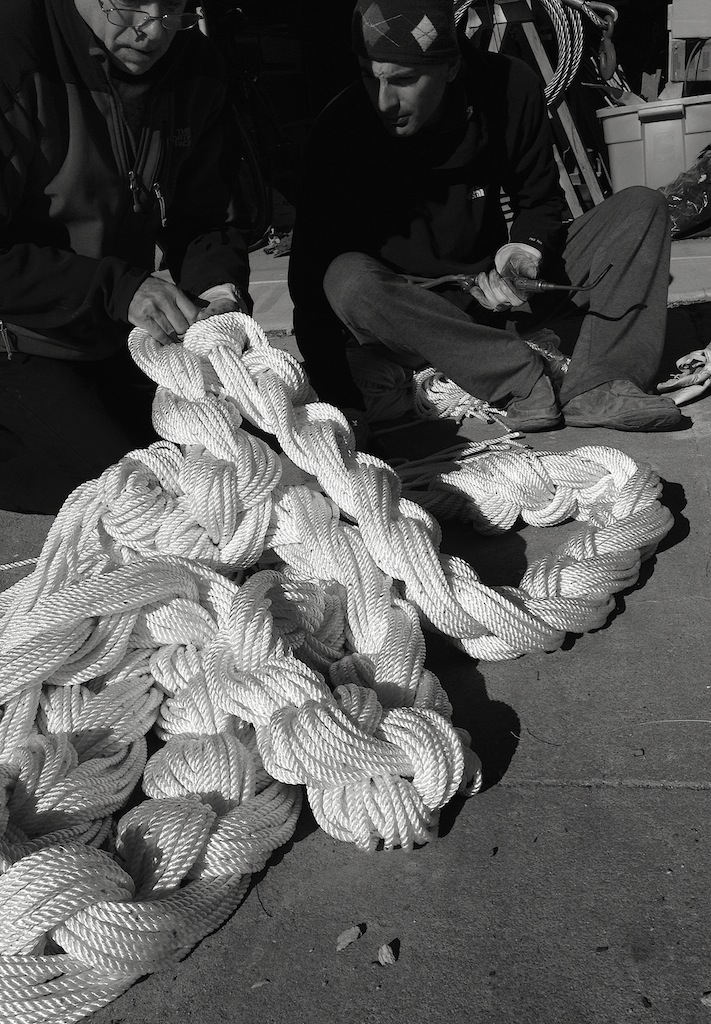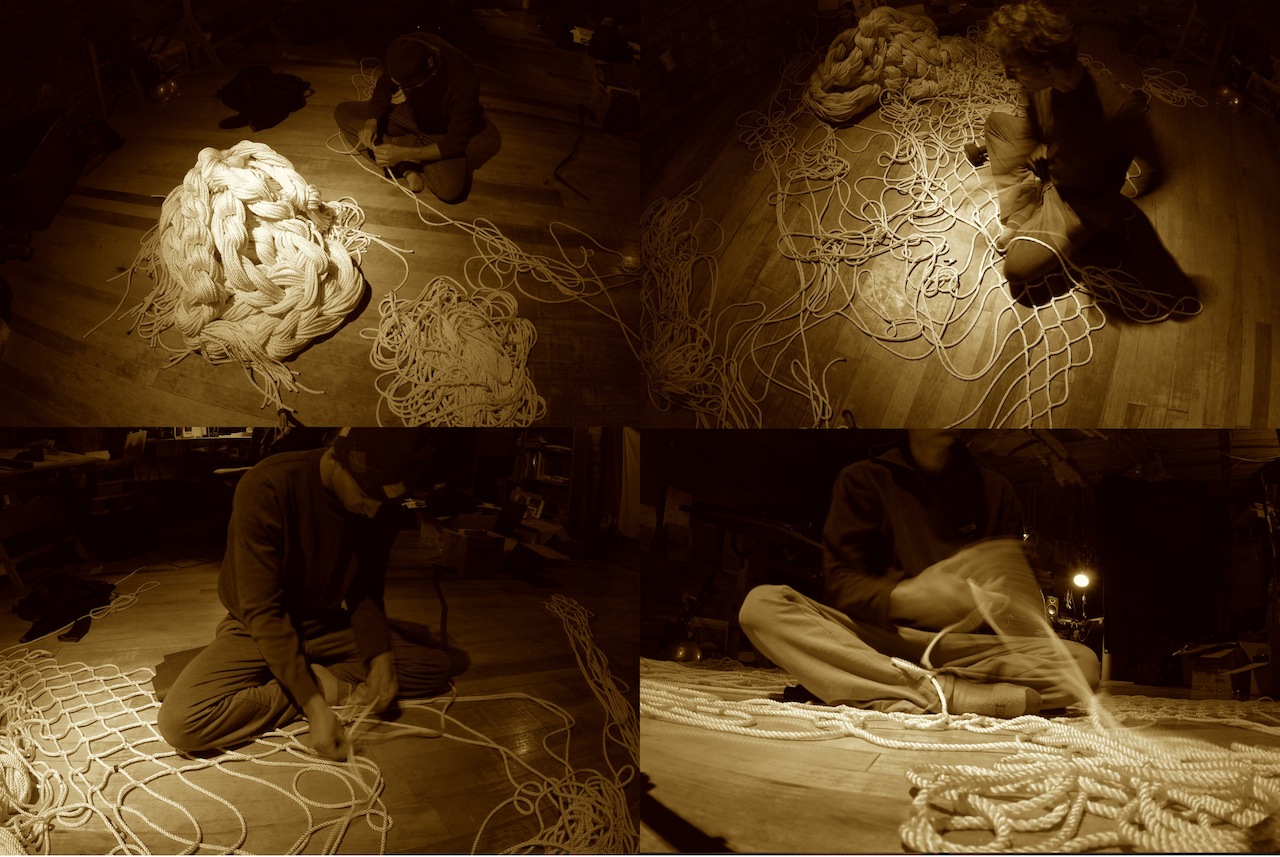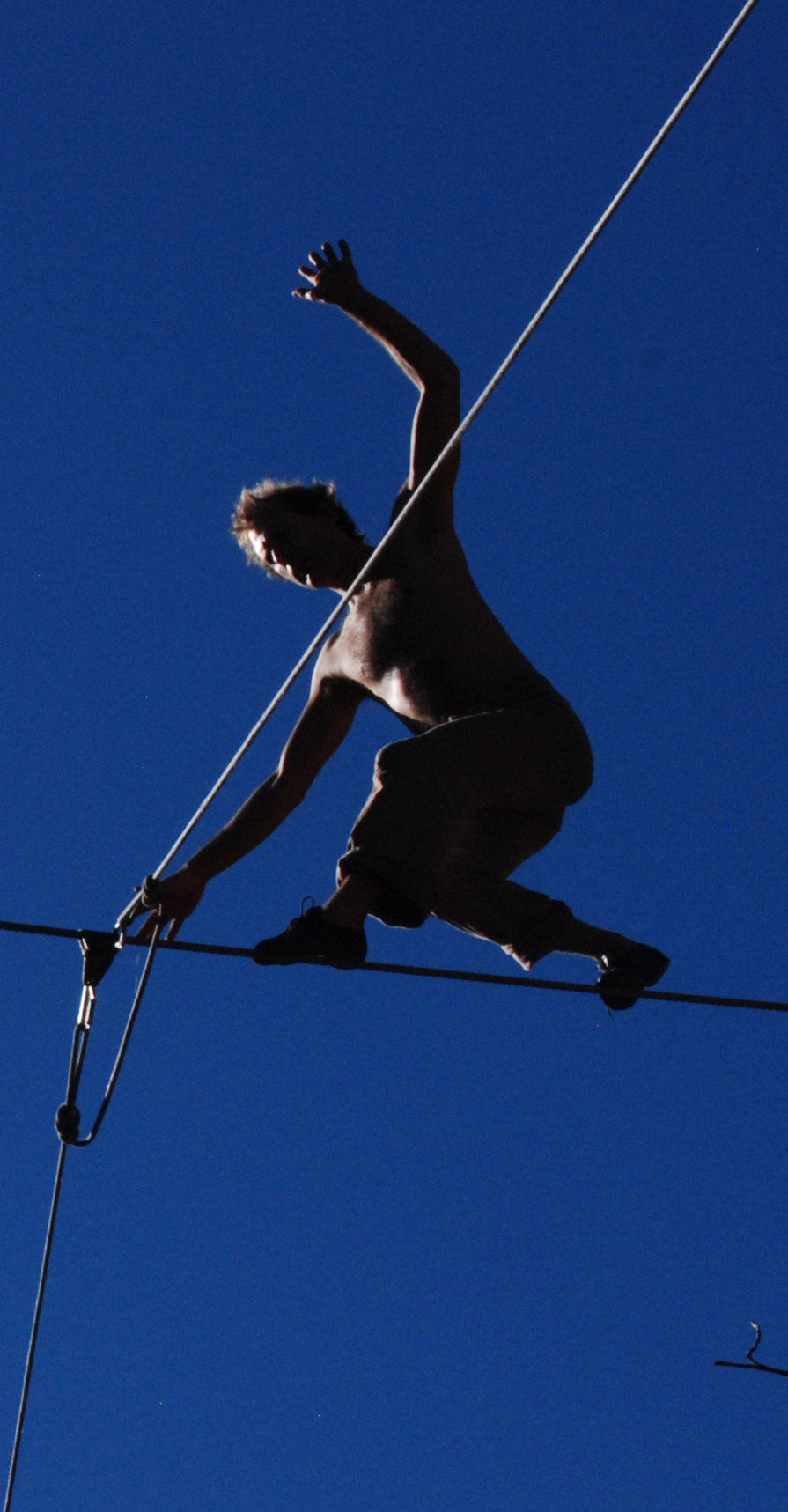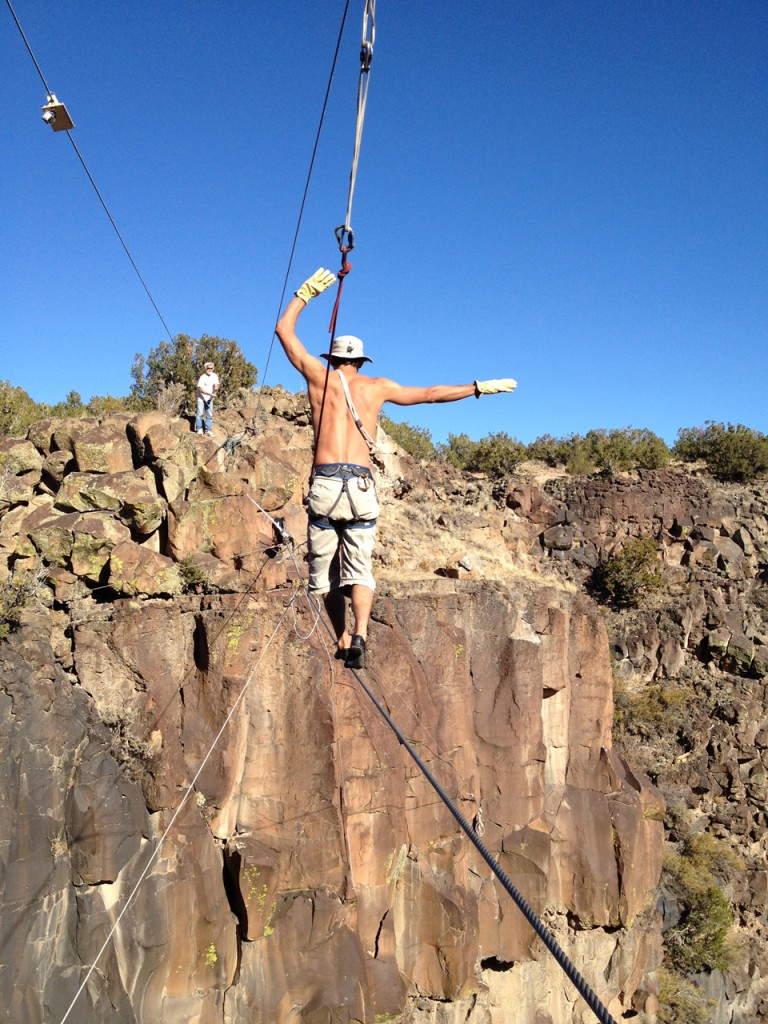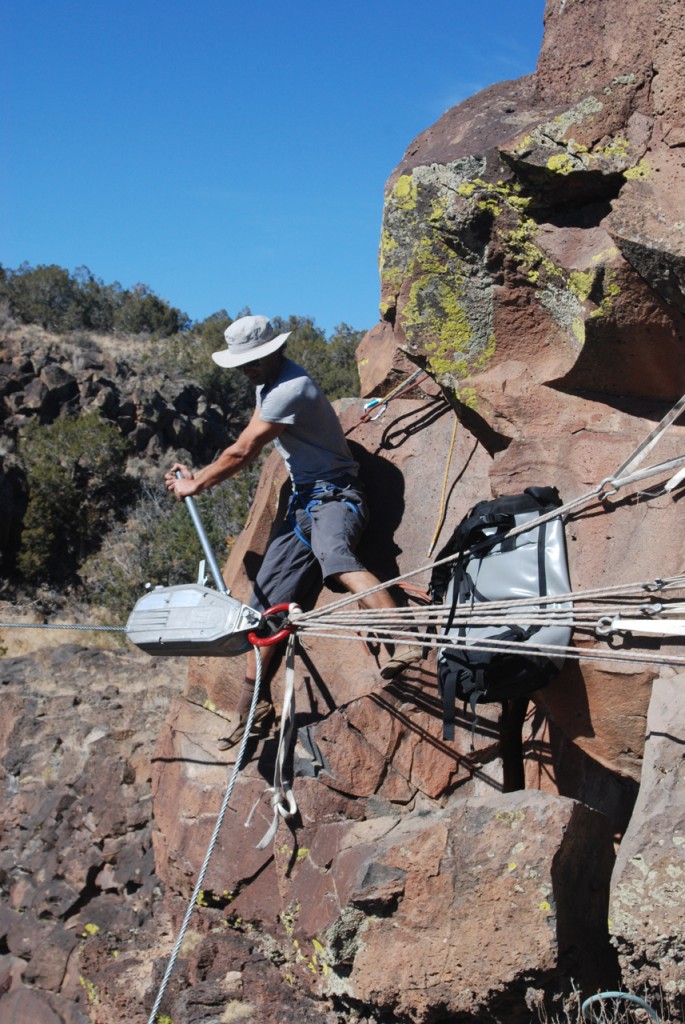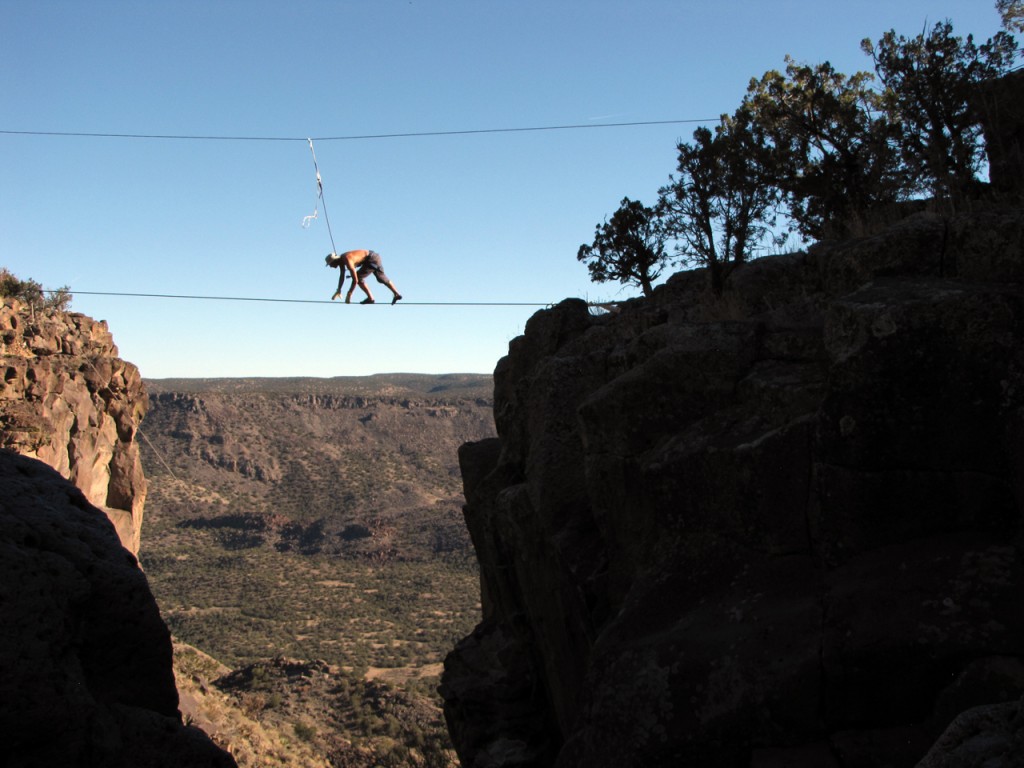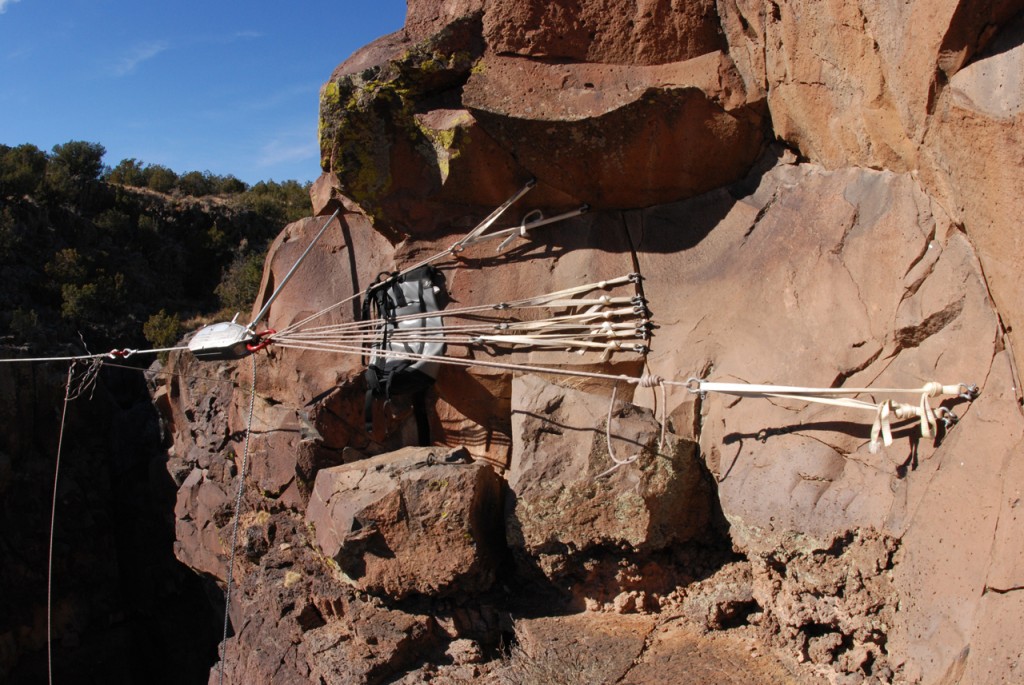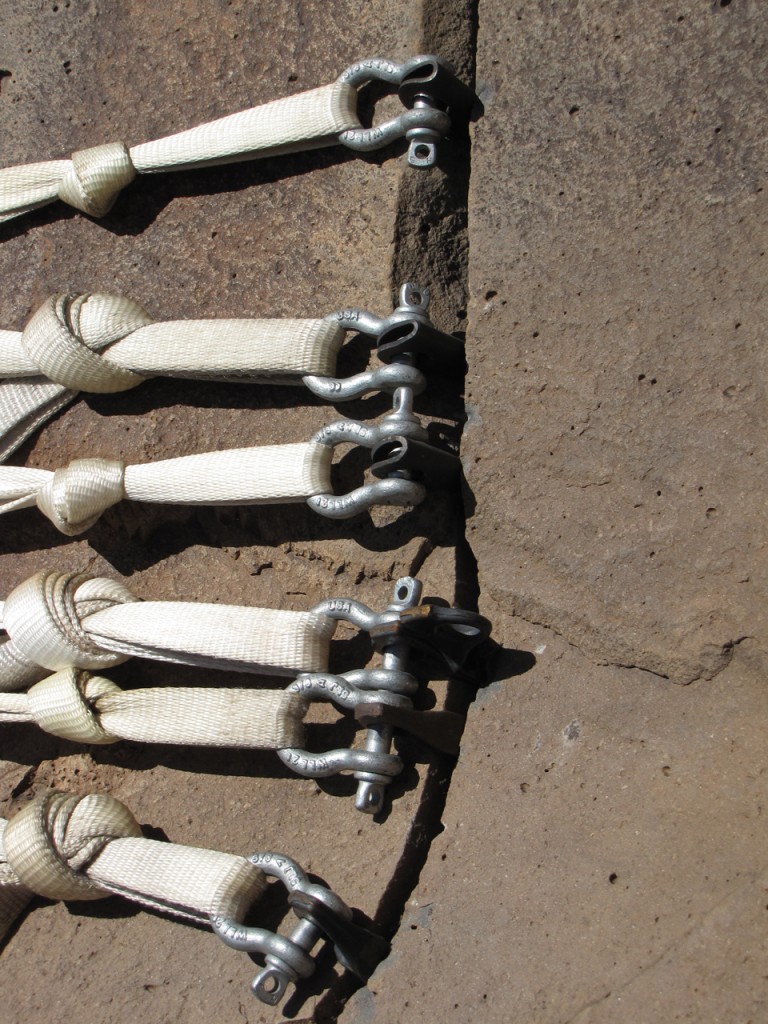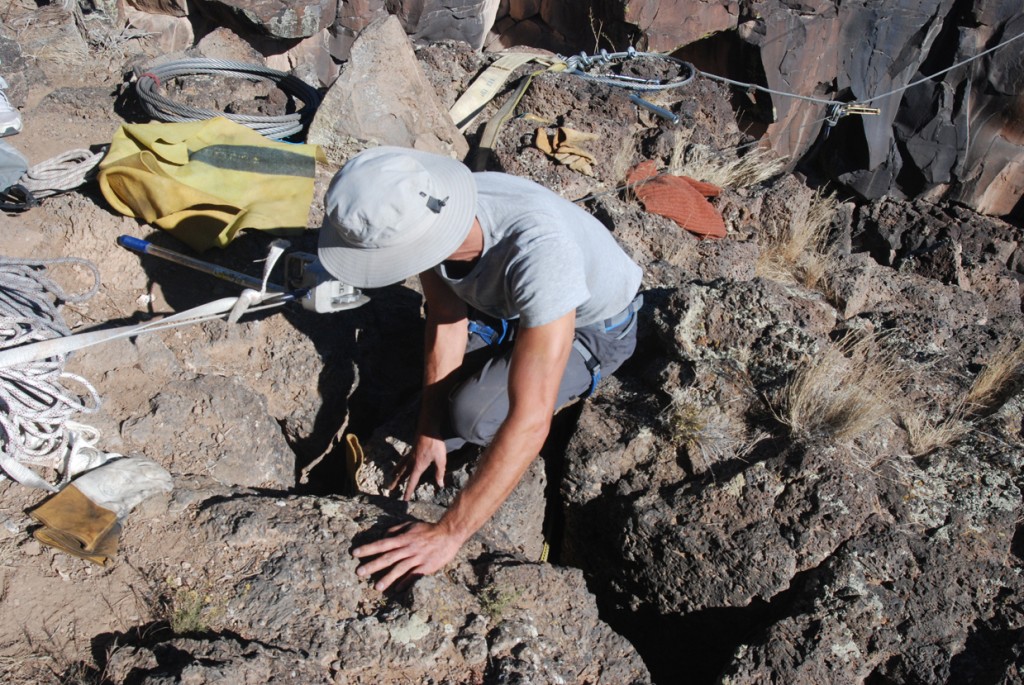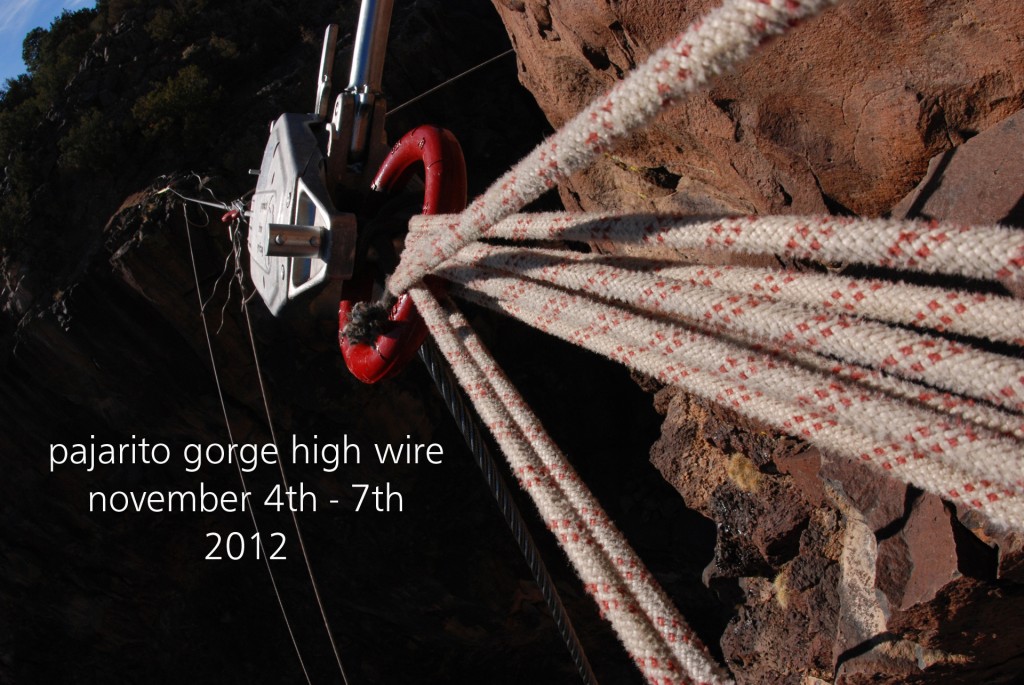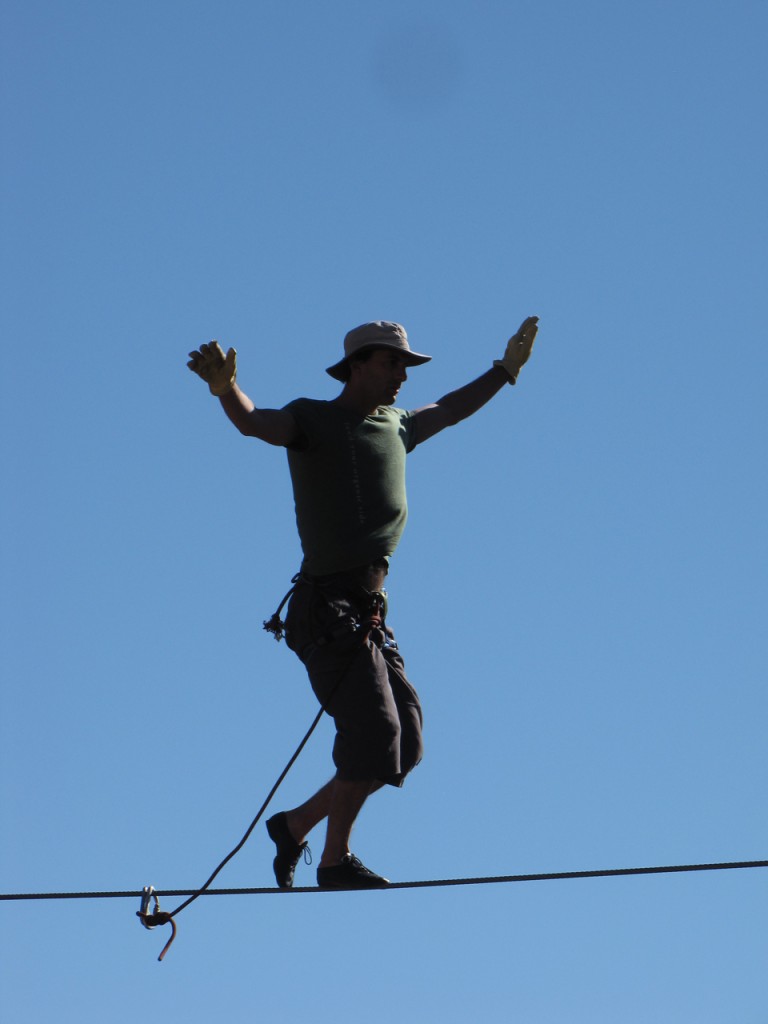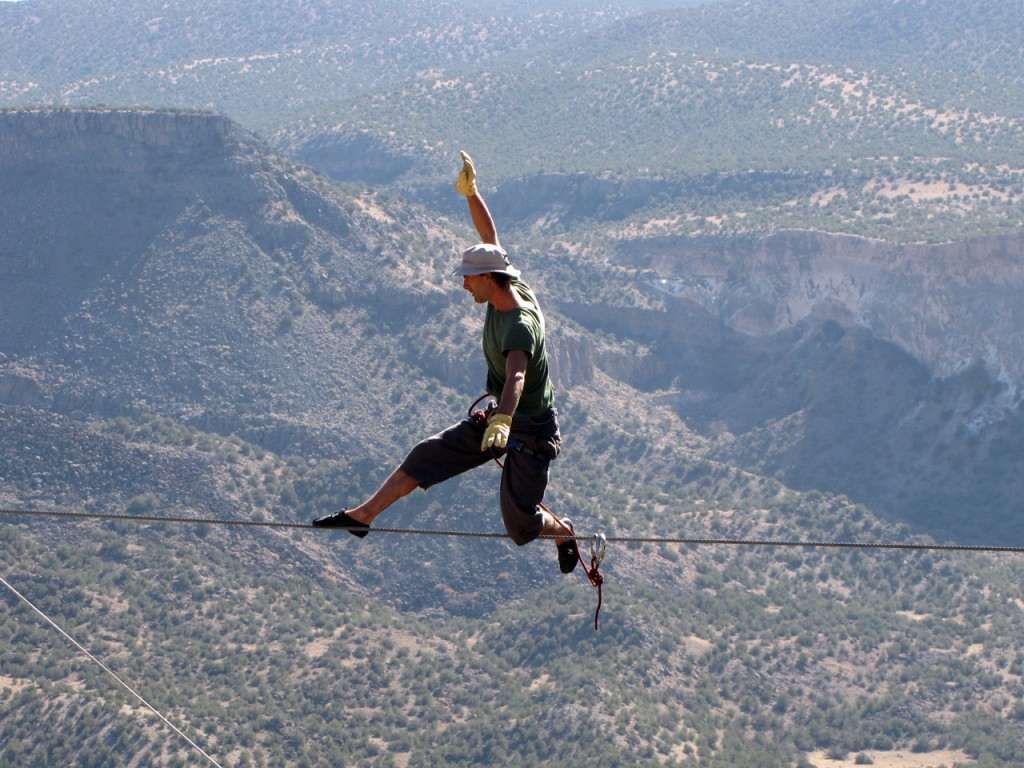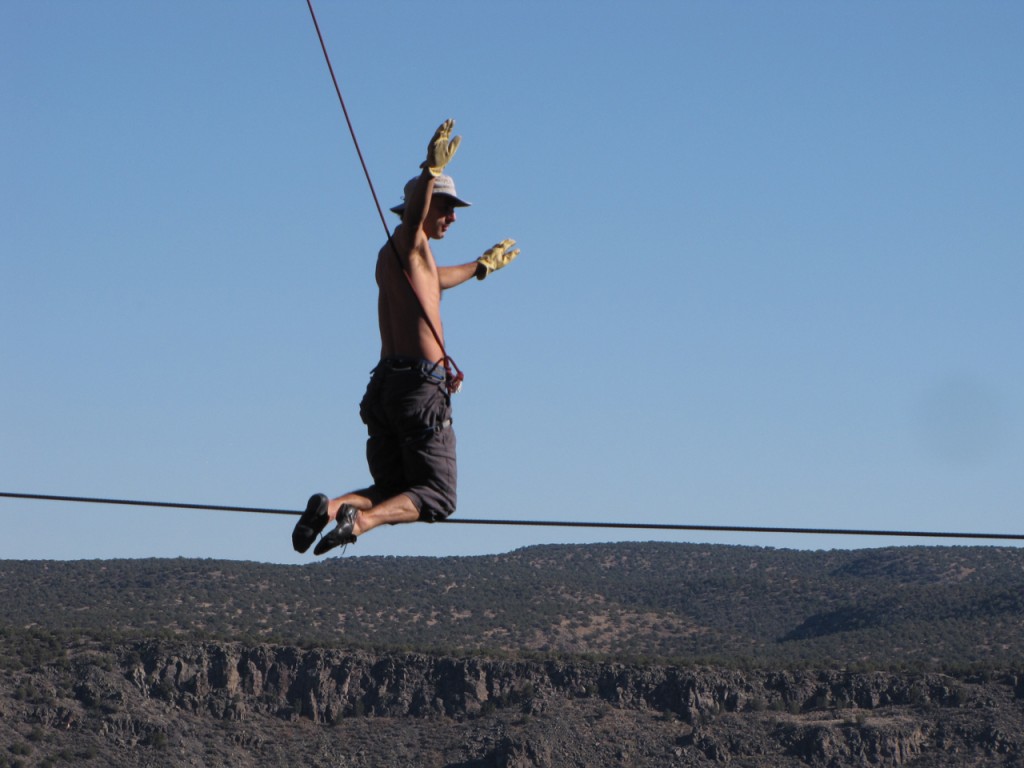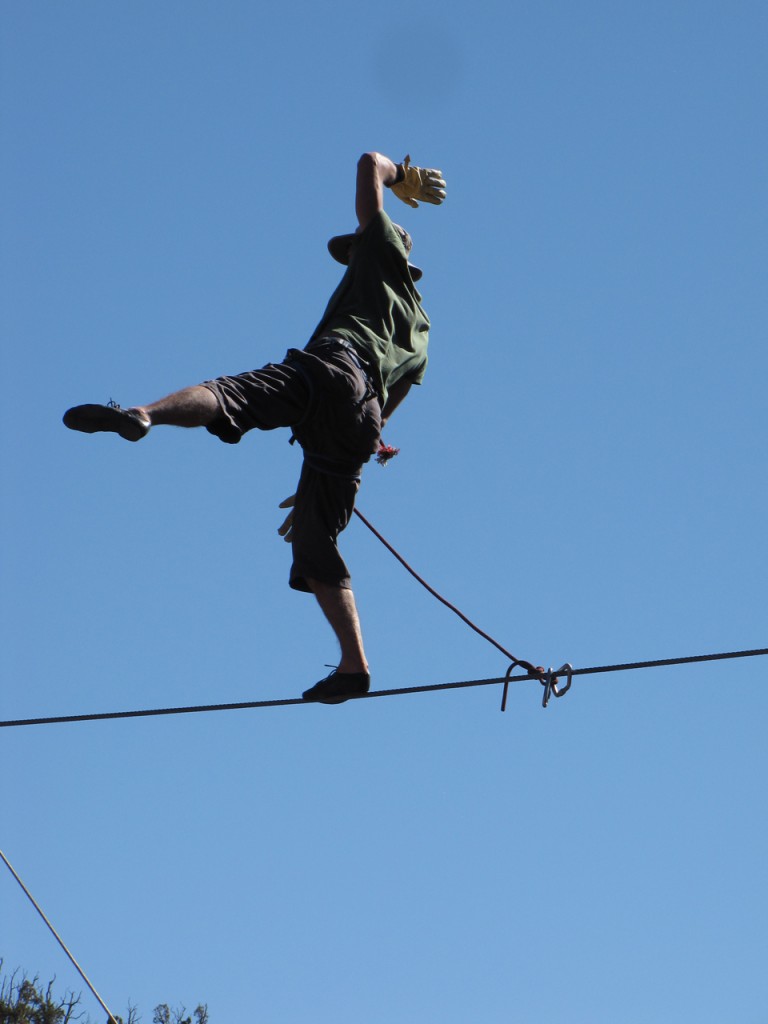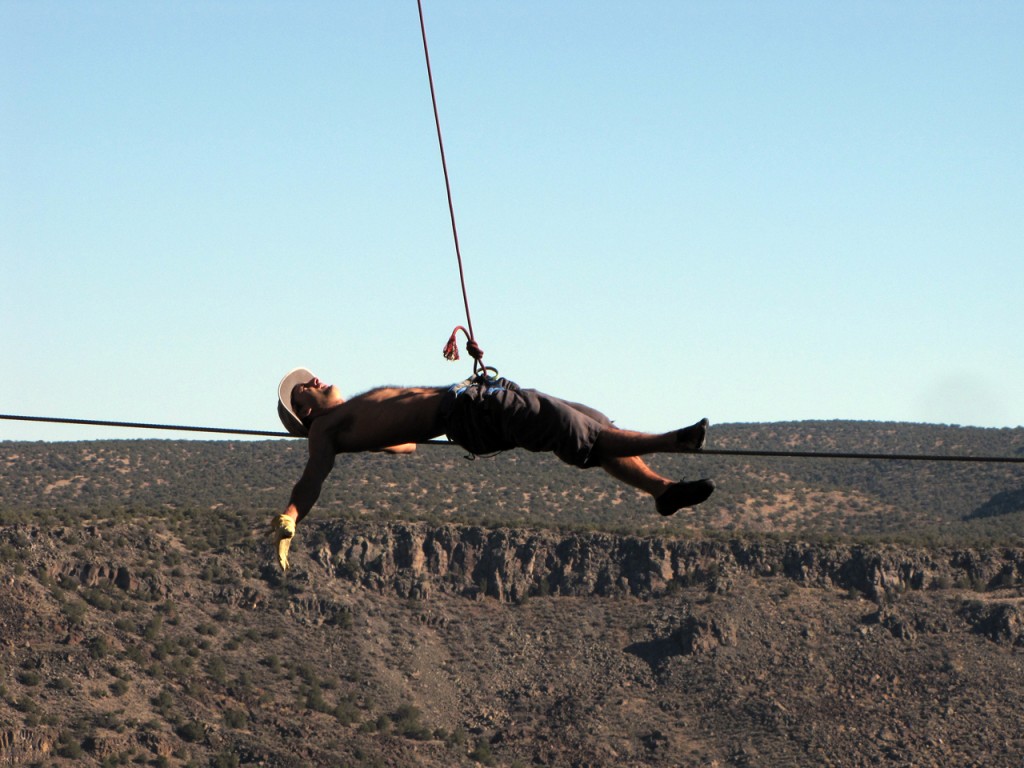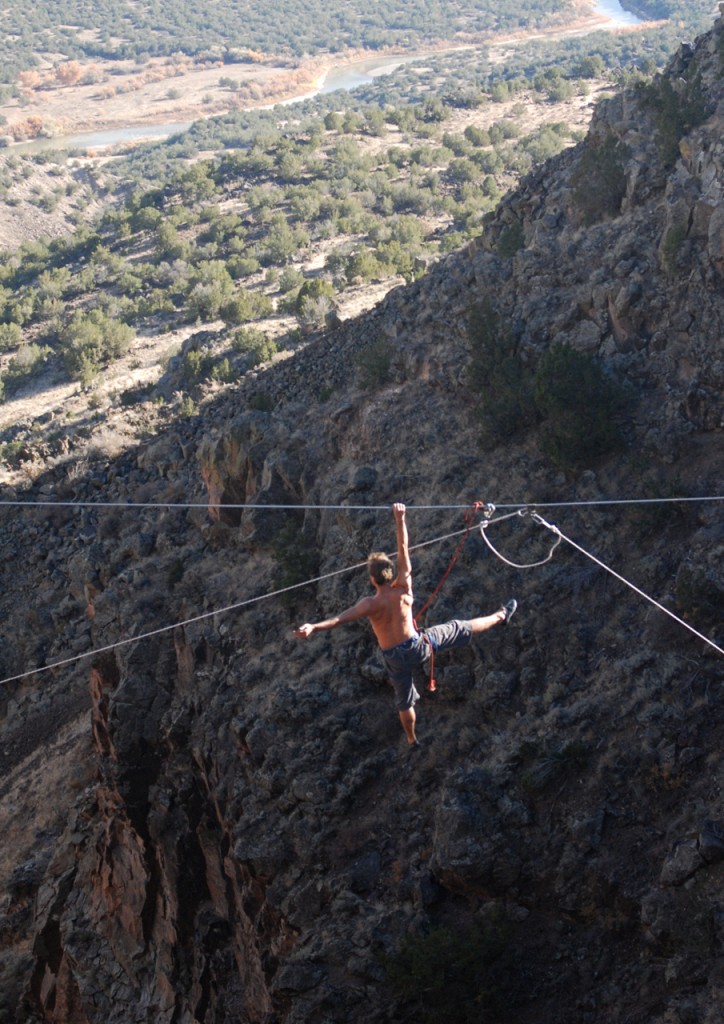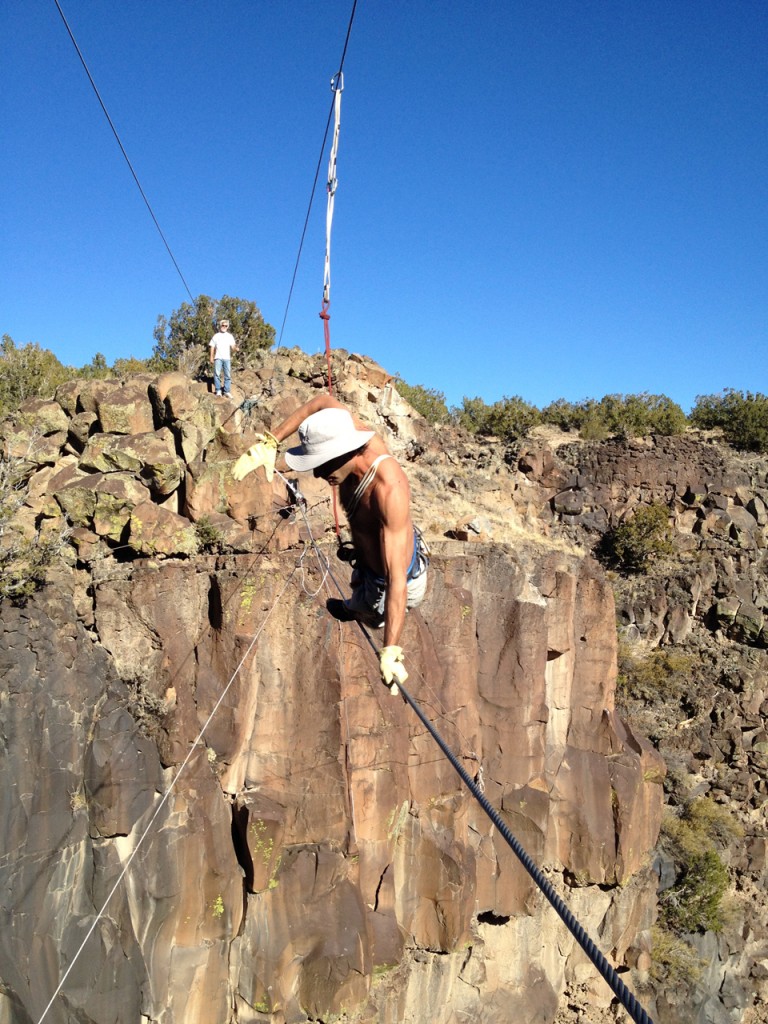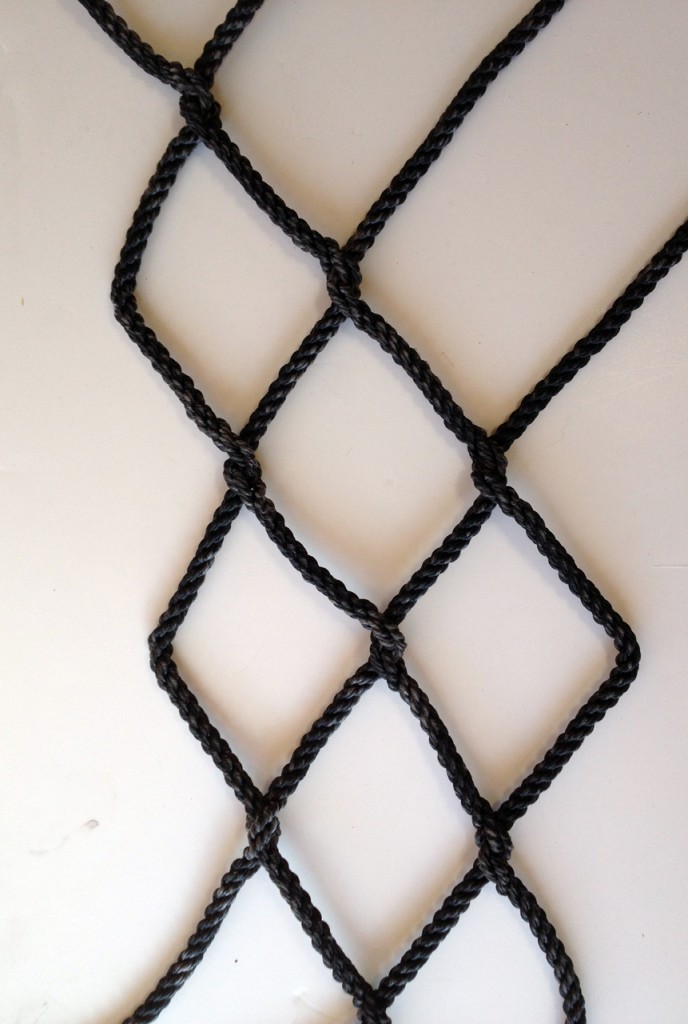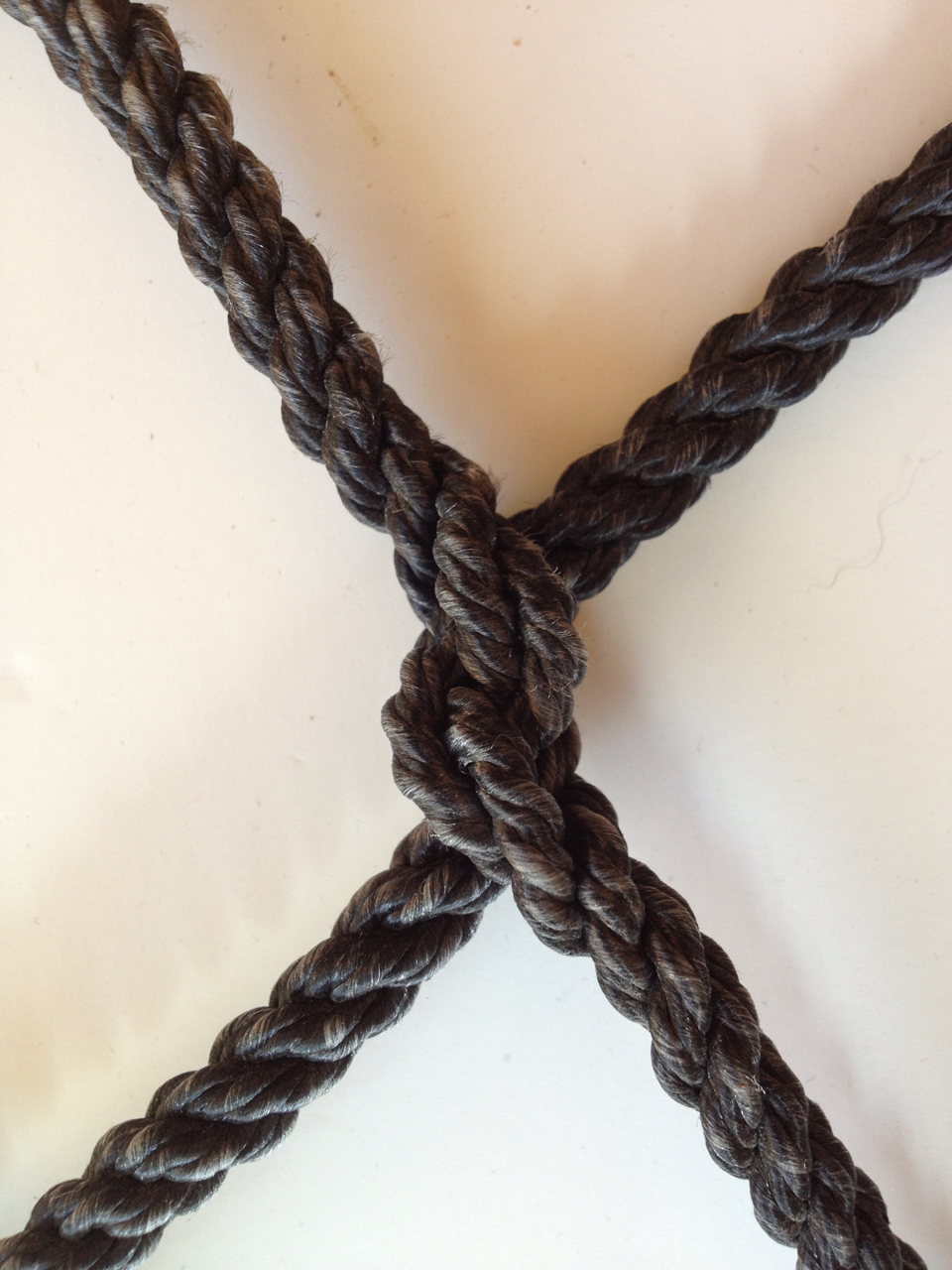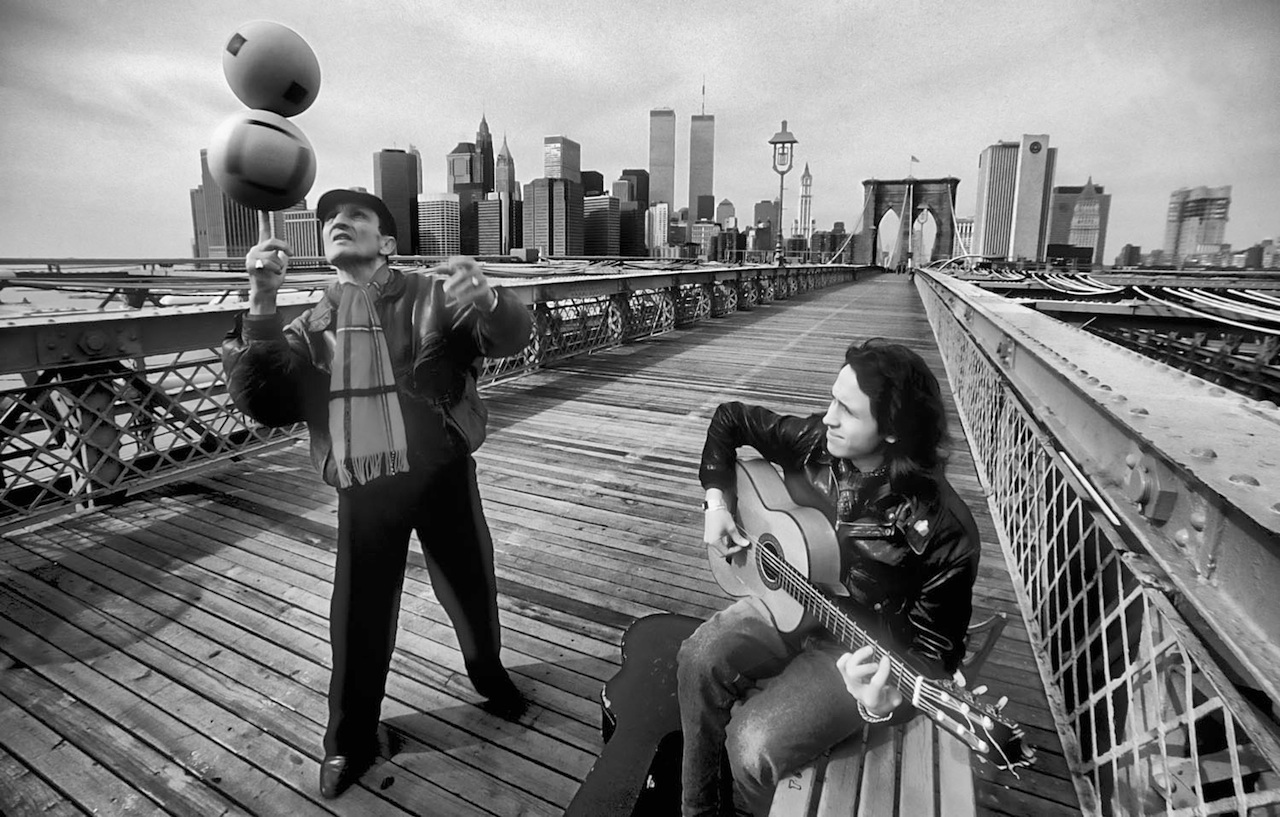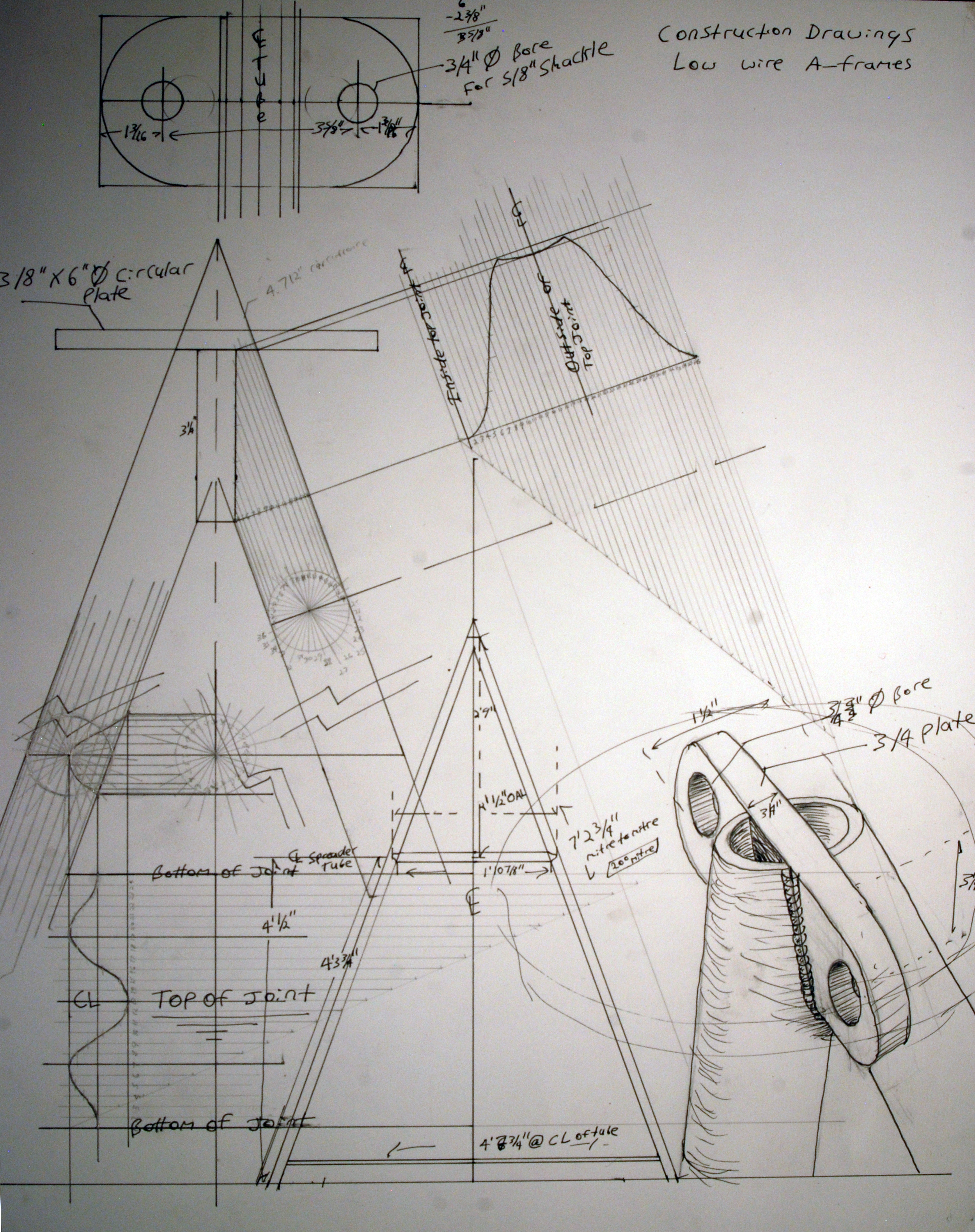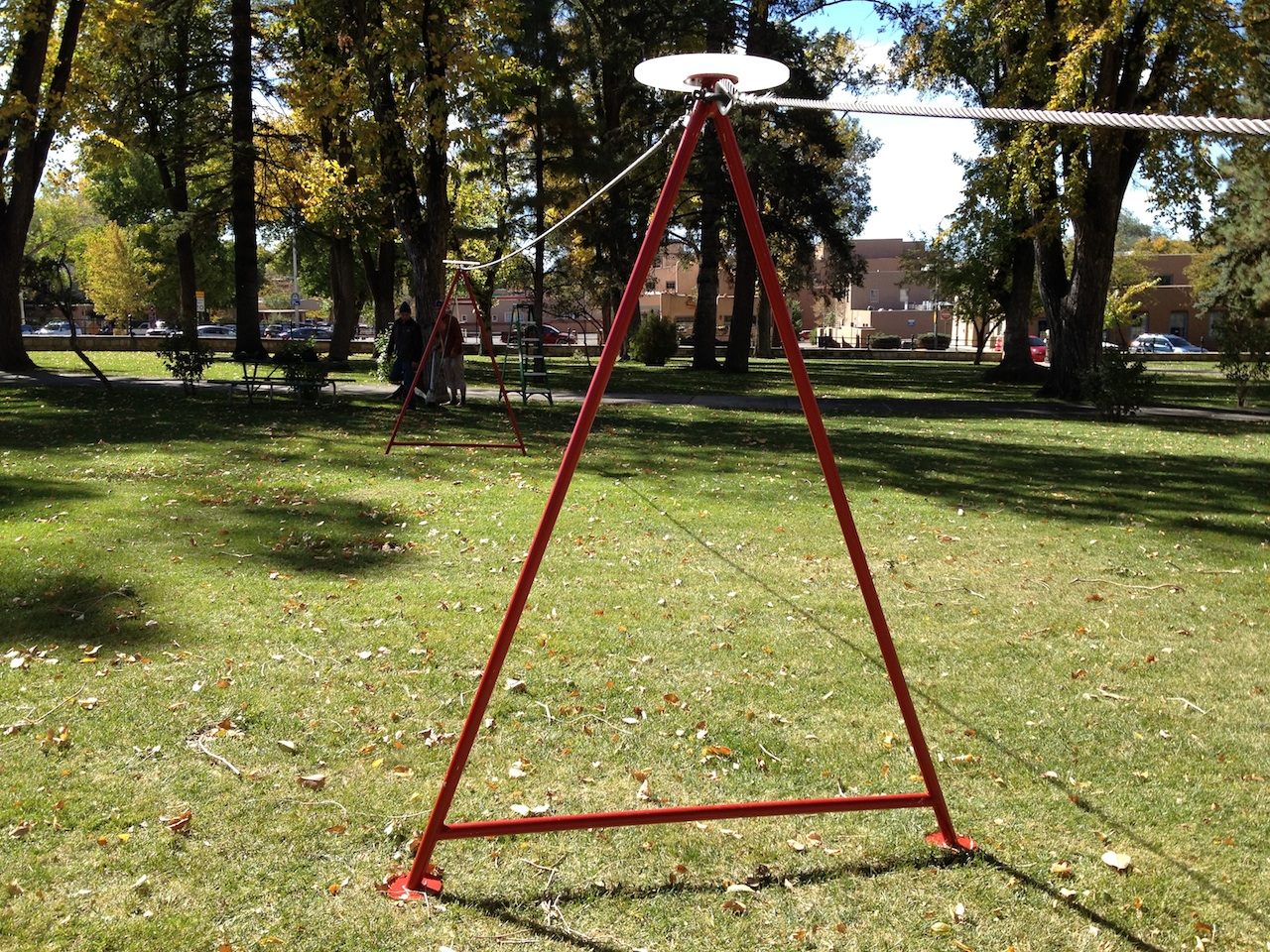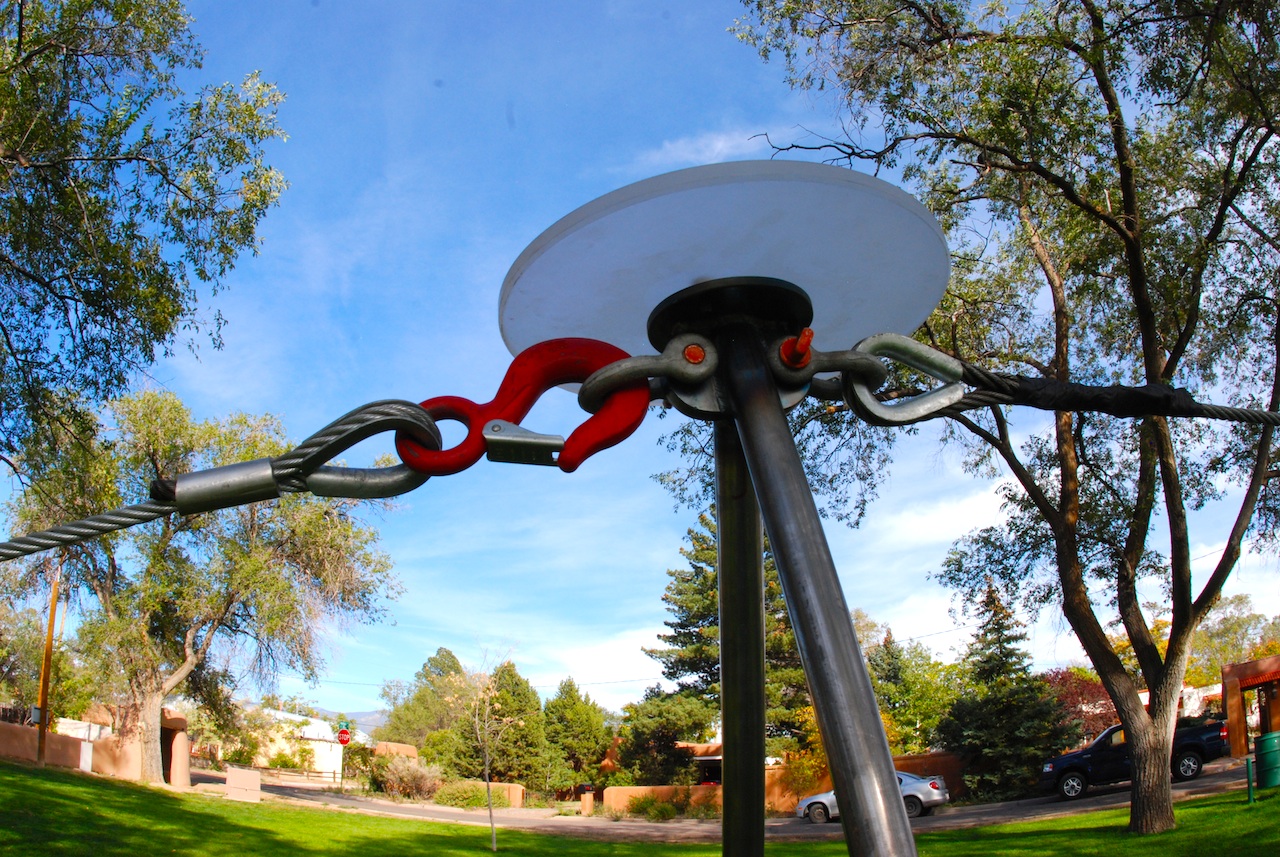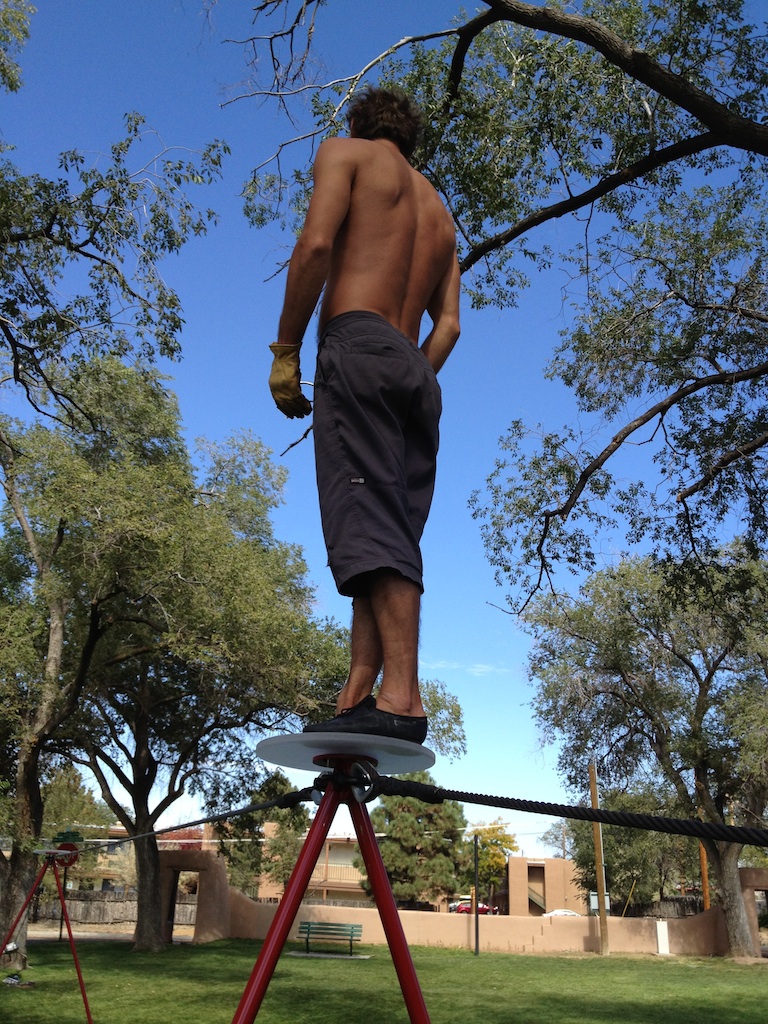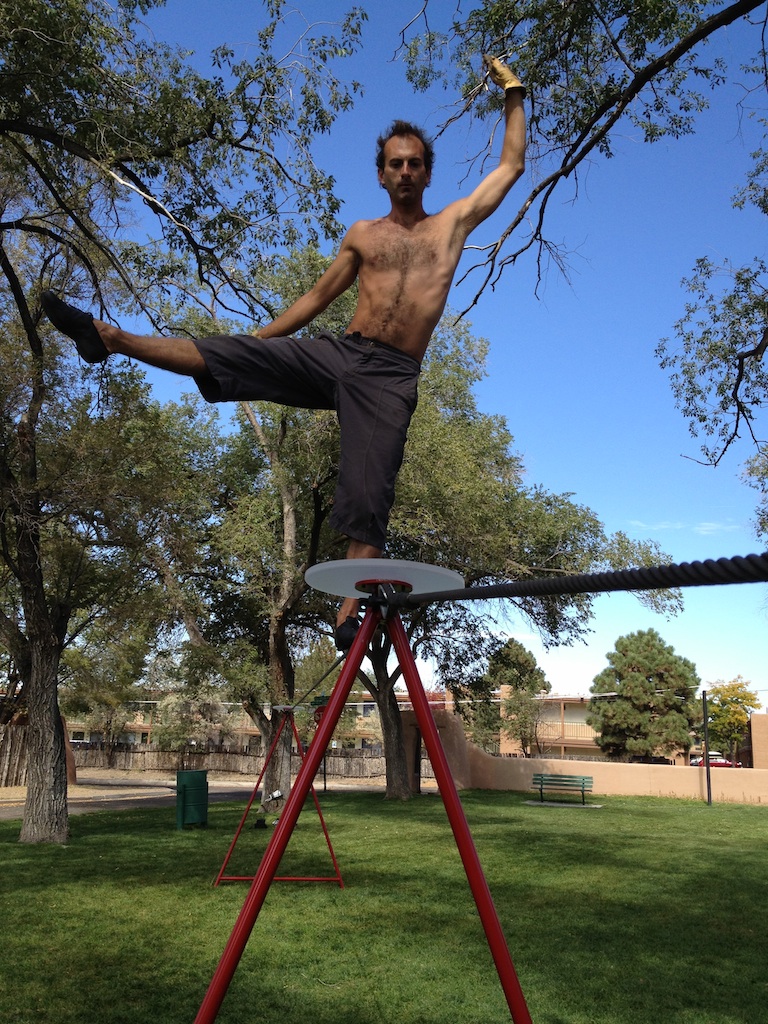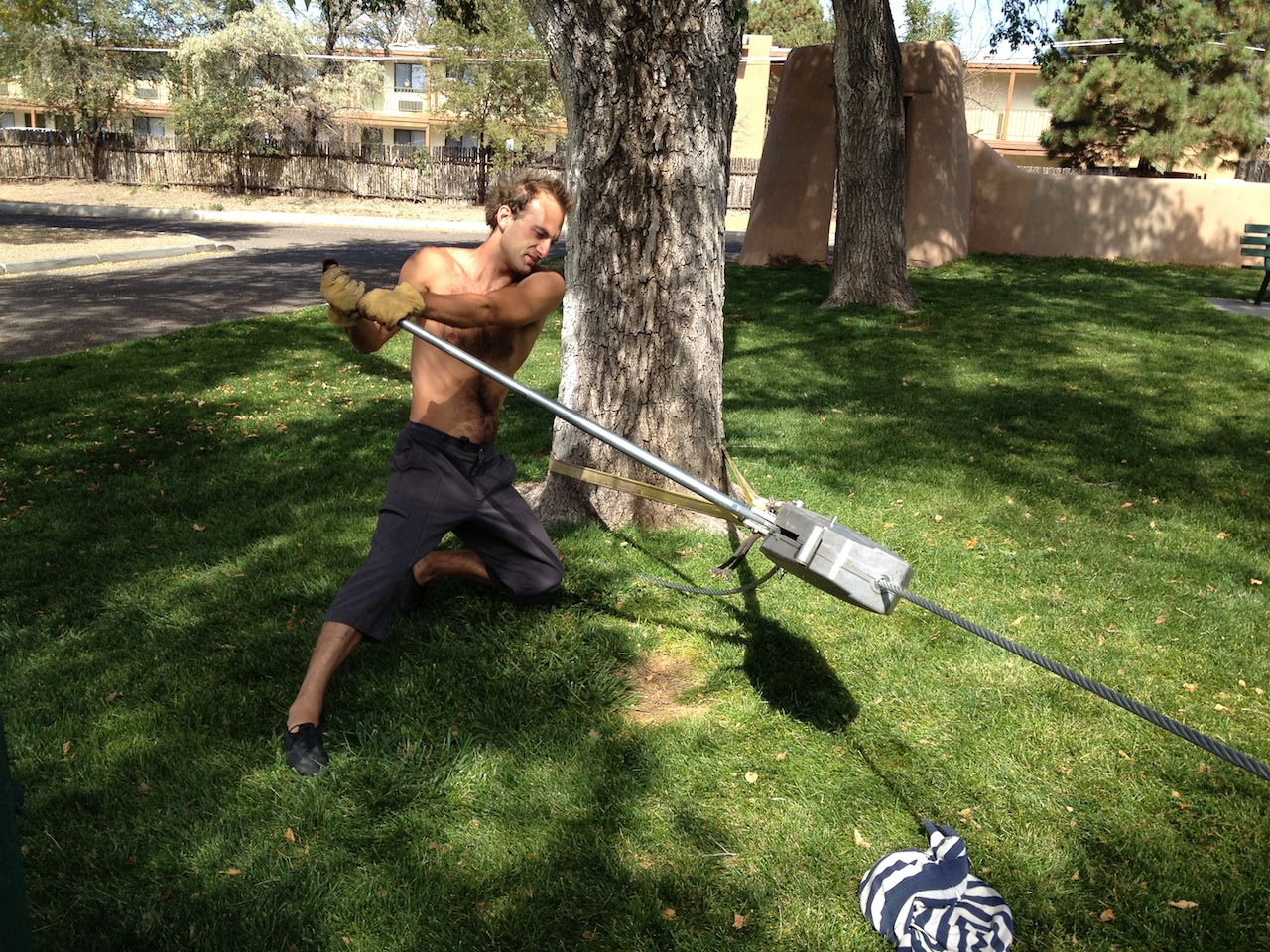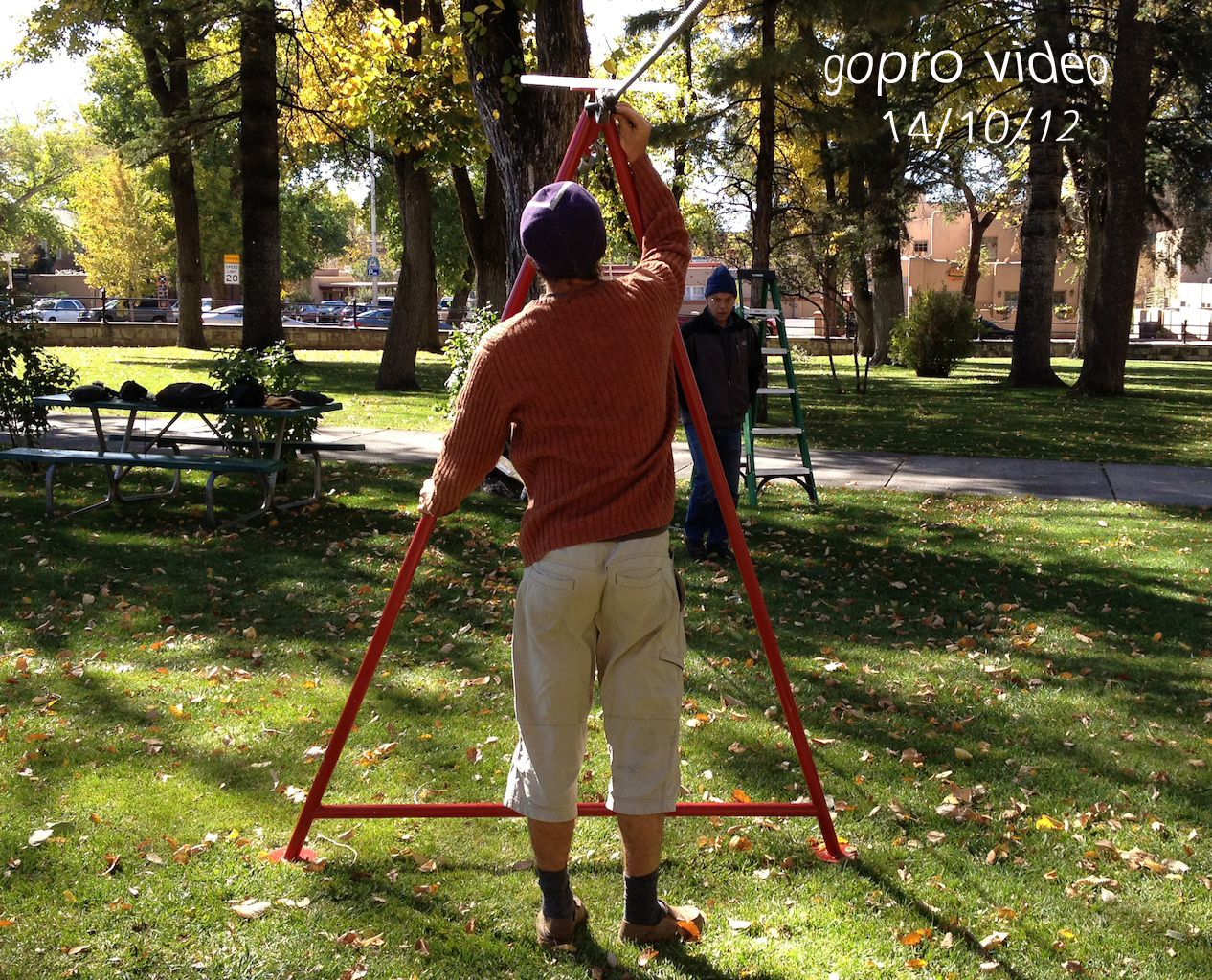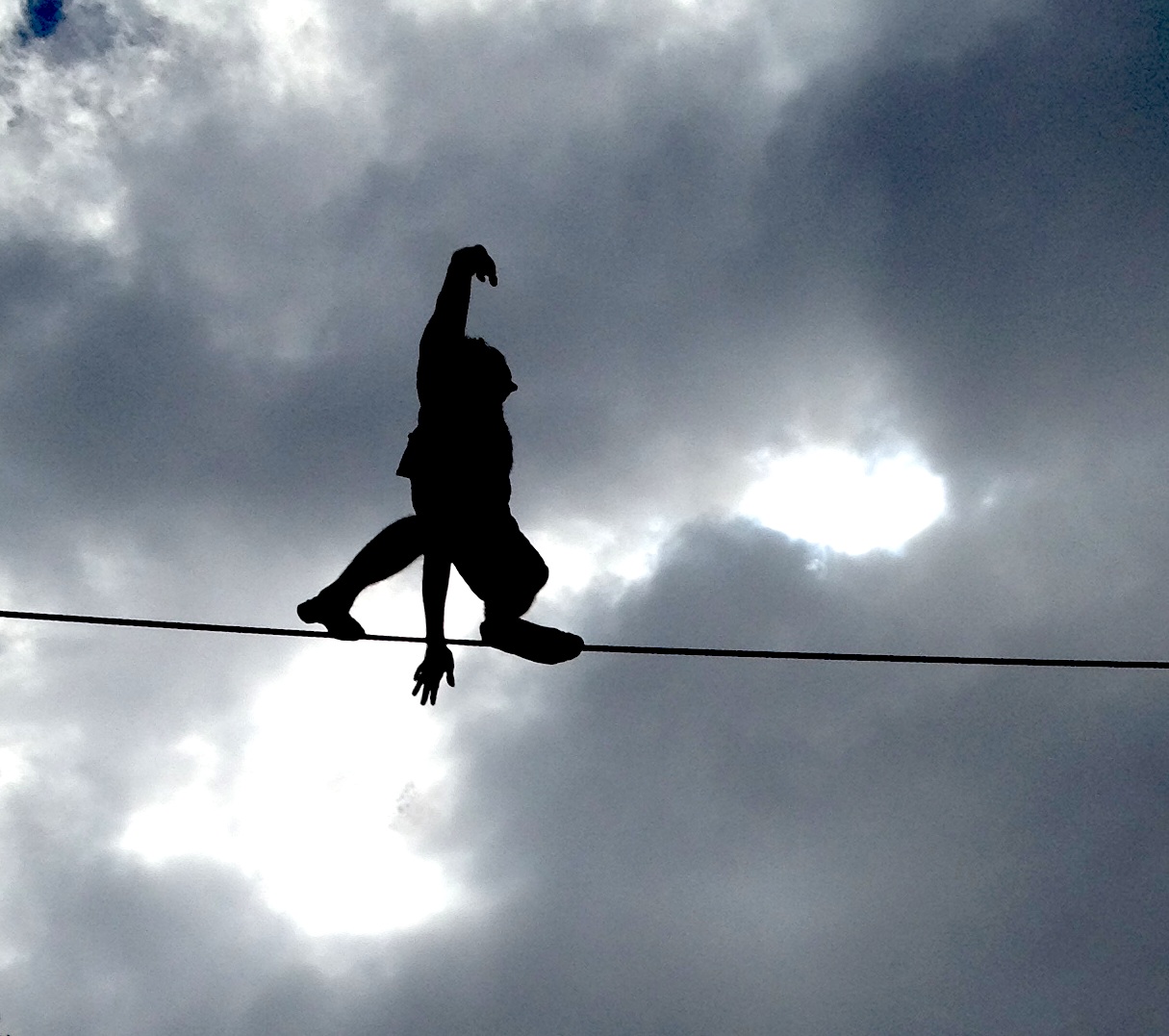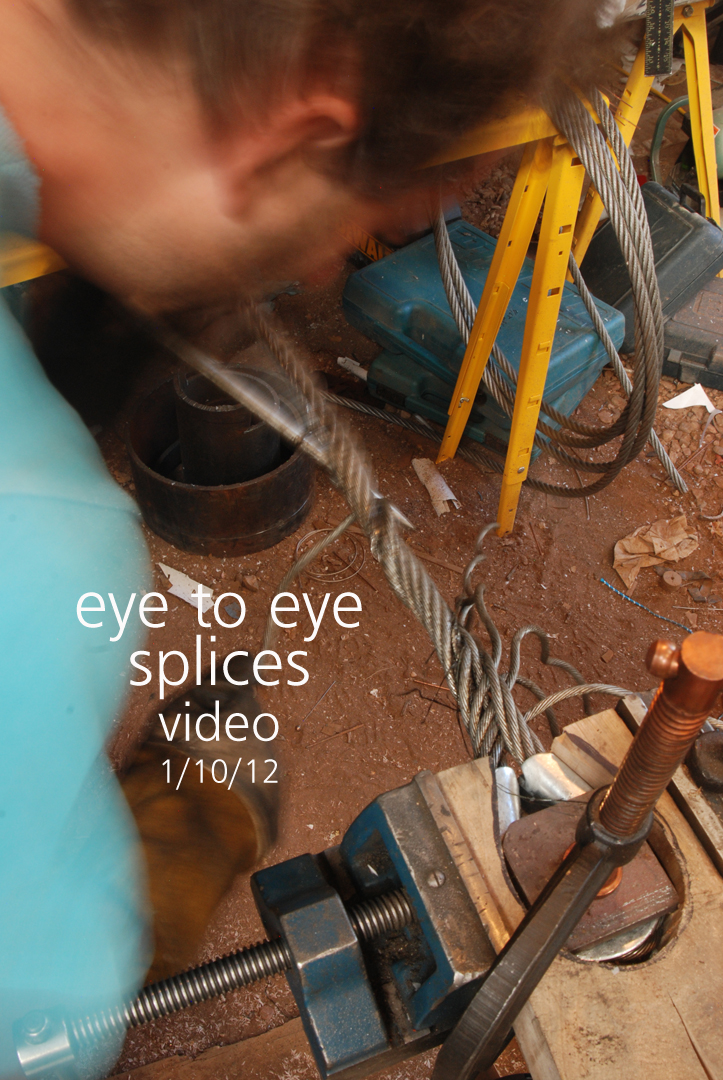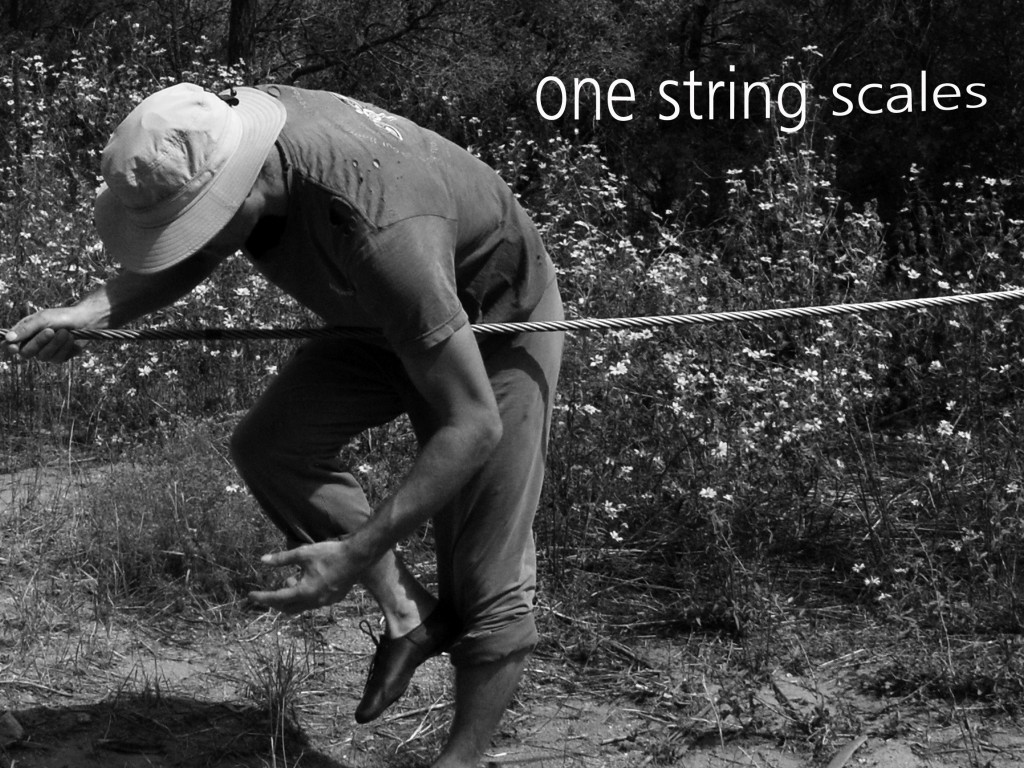It has been an exciting month as the long worked on elements of my structure have come together. Last week I finished painting the steel trusses columns and their bases, and was able to erect the two main trusses along with the four columns for the net. Yesterday I lifted the net into the air and at the end of the day jumped from the wire and was caught by my net.
I have chosen to erect the structure in a meadow about a quarter mile from my house. It is located among a number of small and thirsty trees. The ground is so dry this year that the clay and sand have become powdery fine, permeating into all of my tools. Nylon ropes are especially prone to picking up the dirt, so the ropes with which I am working immediately changed color. This fine dirt enters into the structure of the rope and acts like an abrasive working down the fibers from the inside every time the rope is bent or comes under load. Yet all my endeavors, all of my labors of welding and weaving, and training and balancing seem insignificant when I look at the forest around me. I feel like I am living in a natural tinderbox. The land and trees are so dry that if a fire were to start it would consume everything. This is the worst drought in recorded history! This winter there was barely any snow and the lack of moisture is apparent in trees’ condition and lack of spring flowers. I have found only one spring flower, a lonely specimen. It was tiny, barely reaching off the ground, its growth stunted by thirst. Yet it was beautiful, a pure white with a bright yellow center.
Now I wonder if any bees will find pollen. I have also seen only a single bee this spring. It was a small salt bee interested in a yellow shirt I was wearing. At least this week we got a couple of inches of snow although such a small amount just wets the surface and is quickly evaporated as soon as the sun burns through the clouds. I have over the last months noticed great changes in the health of many of the larger ponderosa pines and pinons. They are loosing a lot of needles and the ones that looked unhealthy last year are clearly dying. I feel deeply saddened by this. I am frightened by this drought as I have no control over the situation. The beautiful forest in which I came into the world and has been my home for two thirds of my live is most likely dying. Its color has changed, its smell has lost the pungent aroma of a high desert forest. In my imagination I see it burning, the fire’s heat devouring the trees, animals, my house, my tools, and my work.
The events current and future which terrify and sadden me are part of a dance of flux, the rotation of a great mandala, the mandala of creation and destruction. The rotation of this wheel is eternal and has little care for its passengers. Its spokes are forged by cosmic energies which could in the sliver of a moment sterilize the earth. Its great fires of death are of profound importance. It takes fire to renew life which springs vibrantly from the ashes. Everything fire consumes is something that is alive or once was alive. The only exception is the fusing and splitting of atoms which yield tremendous fires which at unimaginable distances create the light of day and the thousands of points of light at night. Even the minerals and chemicals which we burn are derivatives of ancient life, long ago deceased and entombed in the body of the earth. Without fire and death there could be no creation. Without loss there can only be delusion.
Immersed in the immediate situation of my life, I tend to think of my own concerns and feelings as being of the greatest significance, yet I know my existence is but a drop in an ocean of conscious experience and that ocean is again but a drop in a larger ocean. And even this ocean, the sum total of all human endeavor over the ages, if viewed through a cosmic lens, would scarcely occupy the tip of the sharpest point. The seduction of such a perspective is to free one of responsibility, which in turn can nurture nihilism and negligence. Yamamoto Tsunetomo says in Hagakure: The Book of the Samurai, “Negligence is an extreme thing.” Yet the opposite extreme, that of putting total importance in one’s situation and personal beliefs causes narcissism and often myopic and nasty righteousness. I find both these approaches towards dealing with existence and action dissatisfying and limiting. In the first the macroscopic is enthroned and the microscopic is suppressed leading to false feelings of freedom which lead to inevitable delusion contradiction and pain. In the second, the macroscopic is ignored and false beliefs are allowed to breed which also leads to confusion and suffering. Often I find myself trying to find a balance between these two states, realizing that I am falling to one side. A problem arises in the microscopic and I try to explain and escape its pain by musing on thoughts of cosmic abstraction. Modern physicists experience a similar problem when trying to explain physical phenomenon. Quantum physics works only up to a certain scale, then falls apart when dealing with masses and energies of a large scale. The explanations Einstein provided us by his theory of General Relativity does an excellent job of explaining the cosmos, but falls apart when we look to the actions in the subatomic universe.
I sometimes feel my work suffering from a similar split. I can relate a personal narrative of the labor, hours welding cutting grinding and drilling steel. I can tell of the nasty fumes of oil burning from steel as the heat of welding vaporizes any impurities, of the iron and oil entering my hands staining them black. I have a great passion towards the simple act of doing. I can talk about the feelings of exhaustion and sickness caused by the long days of training in the cold. I relish the splendid feeling of effortless balance and perfect movements briefly executed on a thread of ground. I can talk about the frustration of continually battling my own mediocrity as a funambulist, thrashing from one uncertain balancing to another, barely controlling my vertigo. I am faced each day by the grounding of a dream, what I could be and could build becoming what I am able to do with my hands and mind. I think of once running along the wire timing my stride with the bounce of the wire, but missing and falling in a flash onto the hard steel, the coarse lay of wound metal cutting open my shin, watching the blood run down my leg, flowing horizontally along the cuff of my shoe. I wonder about the source of such actions whose results are at times self defacing. I think, is this anything artistic; is this self expression? Running a finger down my shin I feel dents, are those the contours of my bone? To me all these memories of work, struggle pain and joy are now embodied in my installation of rope and steel. The labor of creation is recorded in the form of the work. The object and its final form is inseparable in my mind and body from the experience of its creation. I question if what I have made is art or of artistic interest. I think that what I have created may have value in the fact that it displays the focusing of creative energies to create a large and ambitious project. It shows that with passion and determination one can make a dangerous and exciting vision come to fruition. But in doing this, does this vision serve others as much as it does me? Does the fact that I am inspired and excited by what I have created and future possibilities help inspire another. Can that which inspires be a thing of utility rather than a creation of aesthetic meditation. My net is useful as it saves me from injury or death, but is also beautiful. I made it for a purpose, one which it serves. Yet beyond this purpose it does have an intrigue and interest to it. It is large and hand made. It took much time to create. When I look at it I see things beyond labor and utility. I am reminded of graphic models of space time. As the forces pull and stretch the mesh you can see and feel the invisible force upon the ropes. The cells of the net under greater stress have been stretched to a larger dimension than those under less strain. This is not only a beautiful phenomenon for the organic geometries it depicts but it tells of more than only stress and strain. It is the surface of a fractal, the skin of a snake, the neurons of a brain. The surface of the net with its small imperfections feels alive.
One thing has become more clear in my mind, the making of this installation is a result of a desire to perform explore and create. I am looking to build a place to dance in the sky where I am untethered, but free to fall. Its creation is to serve a love of space, gravity and the feelings of fear and honesty.
